FE2B
Fluids lab for Environment, Engineering, and Biology
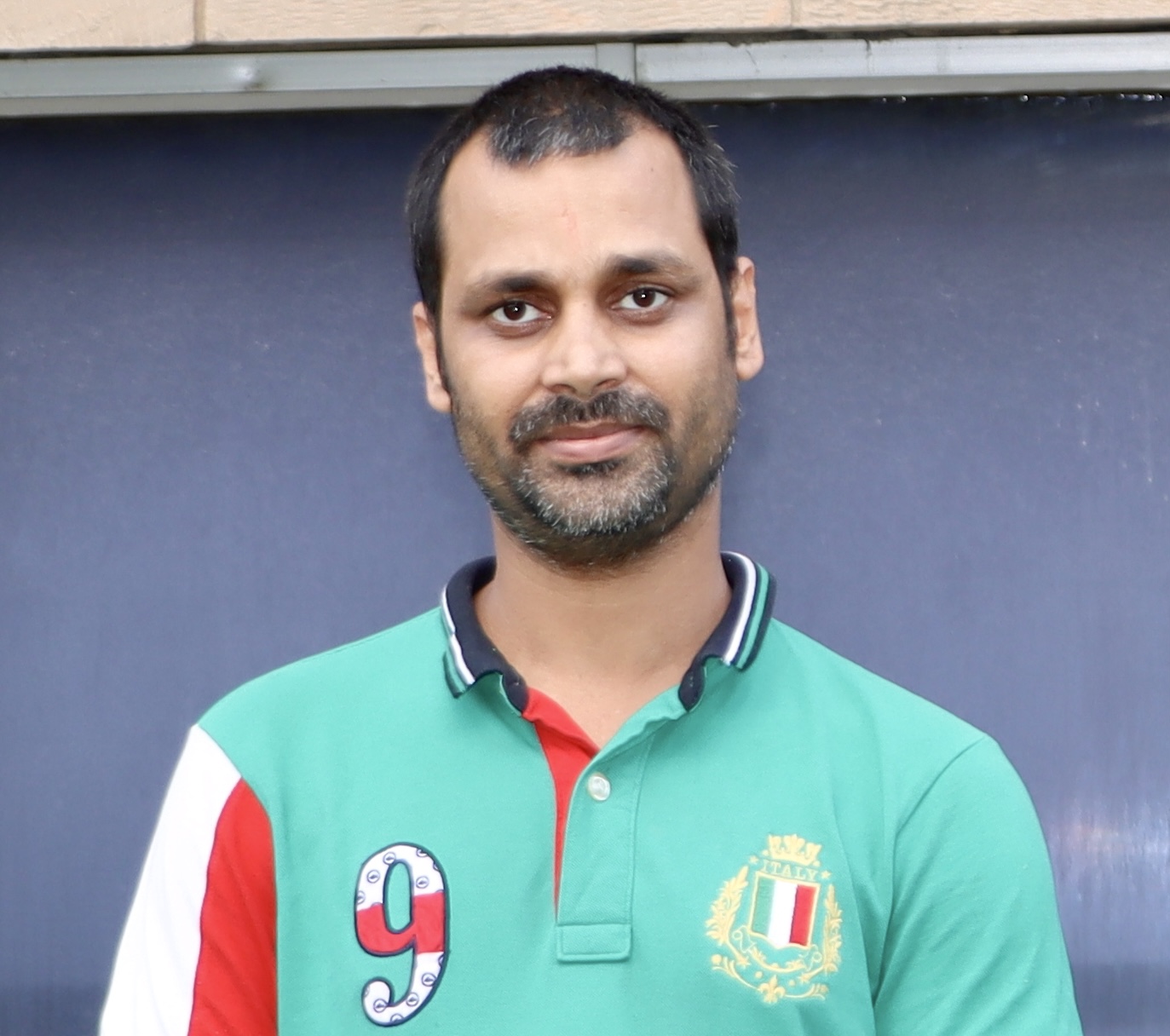
Assistant Professor, IIT Delhi
PhD: IISc Bangalore
PostDoc: DAMTP Cambridge, and
Weizmann Institute of Science
I am an Assistant Professor in the Department of Applied Mechanics at IIT Delhi. Previously, I was a PBC VATAT Postdoctoral Fellow at the Weizmann Institute of Science, Israel, working with Prof. Victor Steinberg on flow instabilities in complex fluids. Prior to that, I was a postdoc at the University of Cambridge, exploring air curtains for energy-efficient buildings with Prof. Paul Linden. My PhD at IISc Bangalore focused on two-phase turbulent flows under Prof. R. N. Govardhan.
Our research group, FE2B at IIT Delhi, focuses on diverse topics, including air curtain mixing dynamics, vortex ring-droplet interactions, bio-fluidic models for cancer cell hemodynamics, underwater acoustic signatures, dry granular mass flow, energy extraction via vortex-induced vibrations, air pollution and IAQ in building ventilation, drag reduction for green shipping, viscoelastic channel flow turbulence, and numerical modeling of vortex-induced vibrations in dam gates. We aim to address fundamental and applied challenges in fluid mechanics across environmental, biological, and engineering contexts.
I strongly encourage dedicated students to contact me for their Masters or PhD study. My lab (Fluids lab for Environment, Engineering, and Biology: FE2B) focuses on Understanding Turbulence For Societal And Industrial Need: Two phase, Stratified And Elastic flows. We are basically a group of experimental enthusiasts interested in solving fluid dynamics problems. Interested students are encouraged to contact me personally at narsingjha@am.iitd.ac.in.
Research
Purely elastic instability in plane Poiseuille flow
To investigate elastic instabilities in polymeric flows, I use a 2D channel with a 7:1 aspect ratio, 0.5 mm height, and a length of 1000 heights. Pressure drop measurements, Laser Doppler Velocimetry (LDV), and Particle Image Velocimetry (PIV) are employed to study drag and velocity. I observe elastic waves, nonlinear breakdowns leading to elastic turbulence, and coupling between elastic waves and turbulent states. By analyzing wall friction and flow instabilities across varying Weissenberg numbers (Wi = polymer relaxation time/flow time), I identify distinct flow states and transitions, advancing my understanding of elastic turbulence and turbulent drag reduction mechanisms.
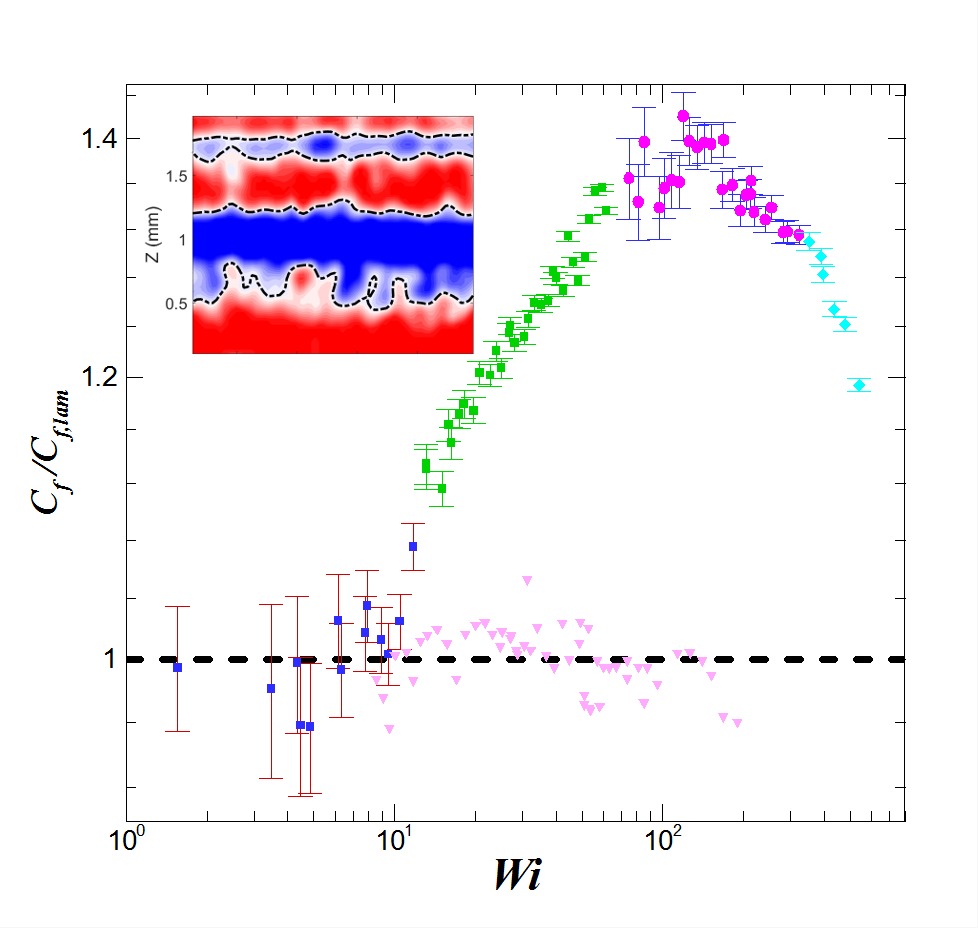
Effect of human passage on air curtain sealing in the doorways of a building
Air curtains minimize heat and mass exchange between cold and warm environments, reducing energy loss and improving comfort. Laboratory experiments studied the impact of a person passing through the curtain, showing decreased effectiveness with increased walking speed. Using dye visualization and time-resolved particle image velocimetry, we examined flow structure and entrainment caused by the curtain-wake interaction, finding the effect independent of travel direction. The feasibility for hospital room containment was evaluated, comparing lab results with real-scale measurements, Fluent simulations, and theoretical models. Additionally, we analyzed the impact of heavier curtain fluids on air curtain stability and effectiveness.
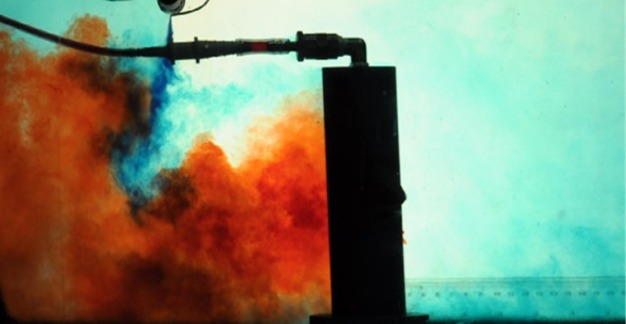
Origin of thin film circular hydraulic jump
I have also worked on experimental investigation of the unsteady behavior of circular and two dimensional hydraulic jump and developed a theoretical model. Surfactant, Acetic-acid, and Propanol are separately mixed in water to vary the surface tension and viscosity of the liquid so that we could study the effect of fluid properties on hydraulic jump.
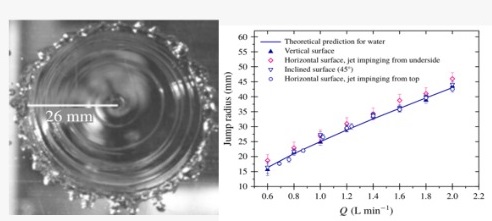
Interaction of bubbles with vortical structures
Bubbly turbulent flows involve complex interactions between bubbles and turbulence, influencing both bubble dynamics and flow structures. This thesis explores these interactions in three parts. First, the interaction of a single bubble with a vortex ring in water is studied as a simplified model of bubble-vortex interactions in turbulence. Next, single-bubble interactions in fully developed turbulent channel flows are examined. Finally, the dynamics of numerous bubbles injected into turbulent channels are investigated. Bubble motion and deformation are analyzed using high-speed visualization, while time-resolved Particle Image Velocimetry (PIV) and pressure drop measurements provide insights into the surrounding flow fields and turbulence modulation.
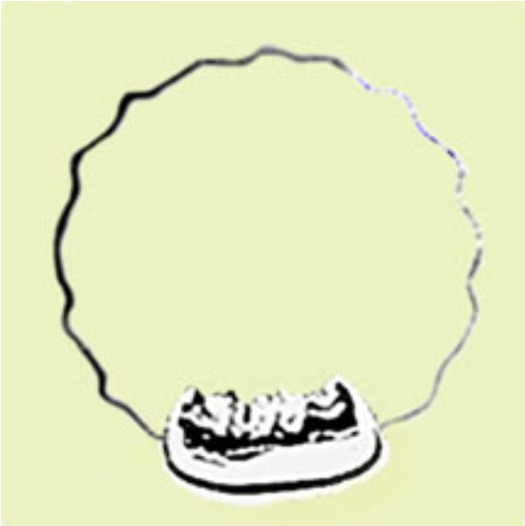
Super-hydrophobic surfaces for drag reduction
I have also worked on the sustainability of air pockets in the crevices on super-hydrophobic surface by controlling the air saturation level of the incoming water flow to get sustained drag reduction. It has been shown there that the shape and depth of the air-water interface affect the wall drag.
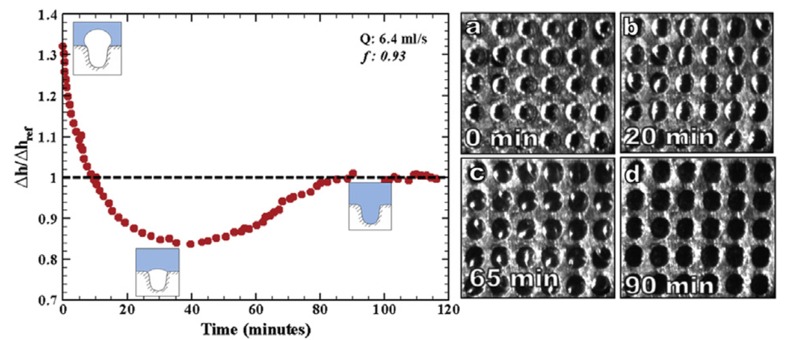
Investigating the flow physics of air curtains using experimental and numerical methods
The flow due to air curtains presents a fascinating interplay of jet inertia and buoyancy forces. The relative strength of the transverse stack effect determines jet establishment and evolution. In FE2B, we combine experiments and simulations to study these flows, relevant to environmental sciences. Conductivity and density measurements estimate bulk fluid exchange, while particle image velocimetry captures flow evolution. Numerical modeling using RANS and LES provides three-dimensional velocity and density fields, complementing experimental data. Experiments offer time-resolved insights into transient flow patterns, enabling critical analysis when combined with simulations. This integrated approach reveals the complex physics governing air curtain flows.
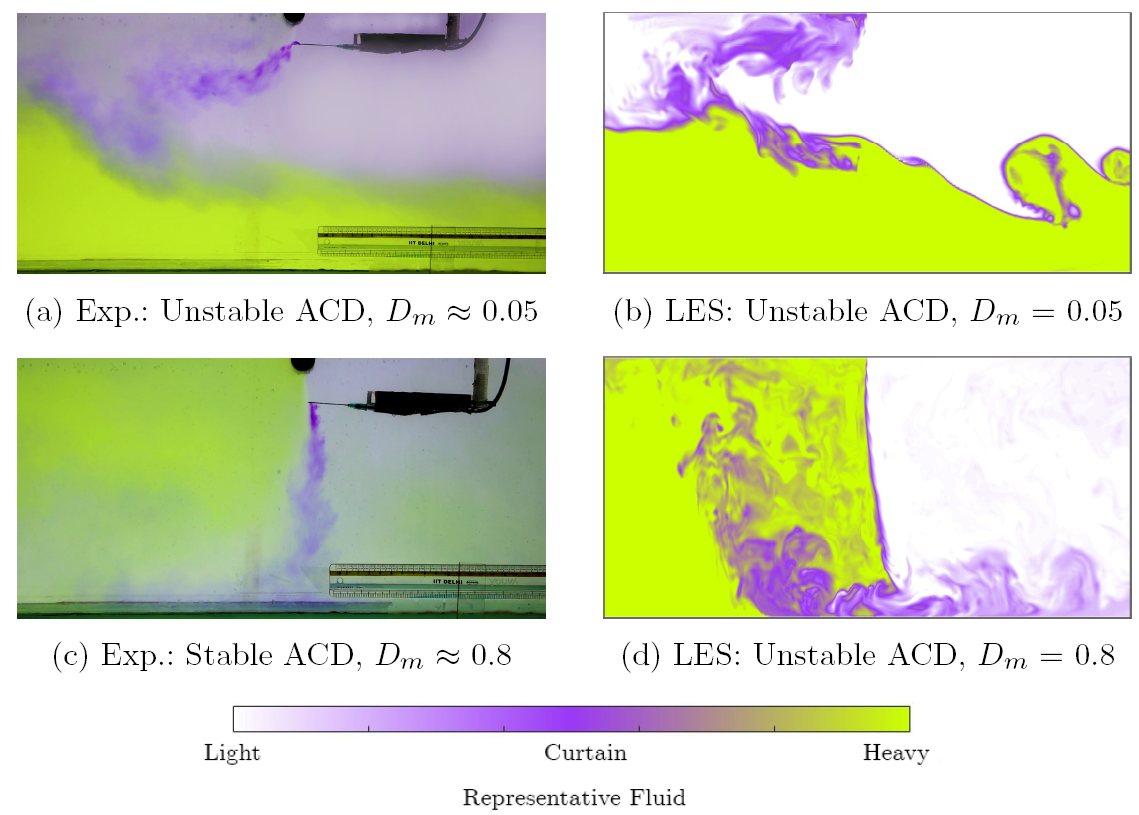
Spatiotemporal CO2 monitoring as a proxy to understand and visualize building airflows at full-scale
Ensuring adequate ventilation and maintaining a well-mixed indoor environment is essential for improving Indoor Air Quality (IAQ). However, increasing ventilation can also facilitate the transport of outdoor pollutants into indoor spaces, a significant concern in highly polluted urban areas. This research addresses this dichotomy by analyzing invisible airflow patterns within buildings, using spatiotemporal CO2 data as a proxy at the full-building scale, and integrating reduced-order modeling (ROM). Furthermore, the study investigates the interplay between the spatiotemporal dispersion of CO2, PM2.5, temperature, and relative humidity.
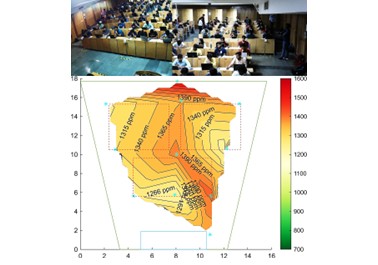
Acoustic radiation of bubbles and vortices
The core looks at the principles governing the behavior and flow structure of sound waves as they travel through water, providing an understanding of the sea or ocean acoustic environment. Sound propagation adheres to the same fundamental principle in the air but has distinct differences in water's viscous and elastic nature. The molecular density provides faster wave traveling characteristics for water than air. The sound waves encounter various interfaces leading to reflection and refraction, making it crucial in sonar applications. These sound waves dissipate energy while traveling in water due to absorption and scattering. The higher frequencies are absorbed more readily, leading to effective communication and detection systems change. The sound traveling profile varies with depth, temperature, and salinity. This sound speed affects sound propagation and can create sound channels where waves travel long distances with minimal attenuation. Marine life, geological activity, human activities like drilling, sonar operation and ocean currents generate underwater acoustic noise.
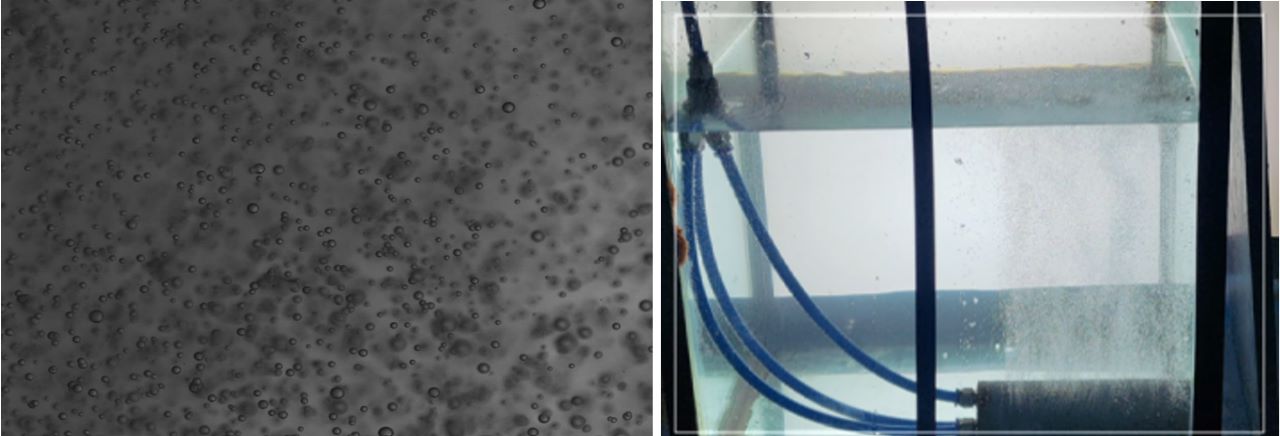
Bio-fluid mechanics and cancer dynamics
For a long time, researchers all over the world have been trying hard to understand and fight against cancer, which is a very complicated disease. One big problem they're facing is figuring out how cancer cells can stay alive, move around in the body, and get into blood vessels despite the strong forces of blood flow. Recently, researchers have started using a mix of ideas from biology, physics, and engineering called "bio-fluid mechanics" to help them understand this problem better.

Cloud microphysics
Rain shapes our lives, yet its formation remains surprisingly complex. It’s both essential and, at times, inconvenient—fueling our curiosity about how it begins. Scientists have long explored this mystery, facing challenges from the chaotic, turbulent air inside clouds. Modern experiments and advances in computing let us probe deeper, but the wide range of scales and harsh cloud conditions still pose hurdles. While we understand many steps of rain formation, predicting its details is difficult. At IIT Delhi’s Fluid Mechanics Lab, we study how droplets move and collide in turbulence—key to unraveling how warm rain forms in nature.
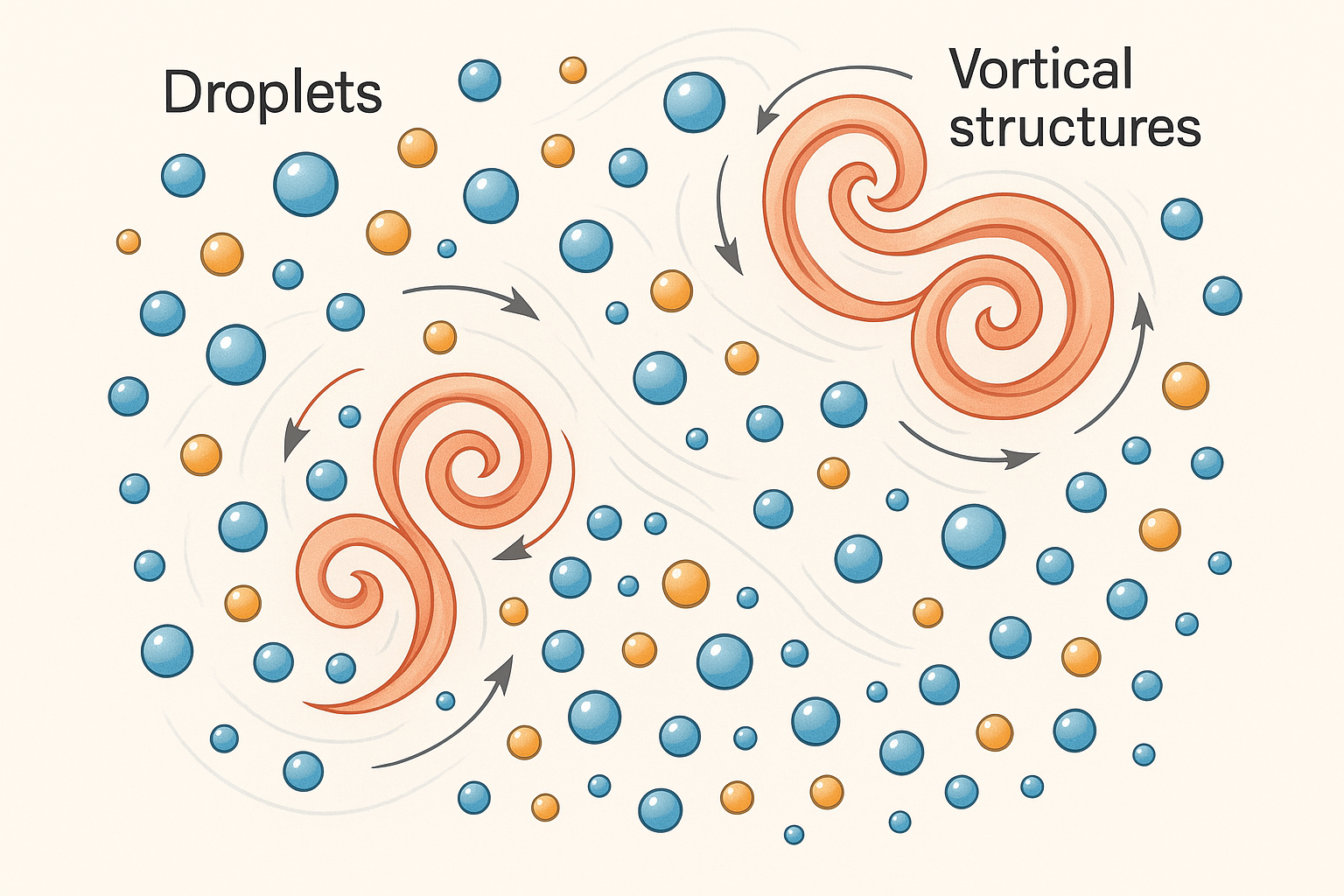
Energy extraction via vortex-induced oscillation and vibrations
A novel approach rooted in harvesting energy from wind and current through vortex-induced motions has emerged recently. Our research endeavors align with this paradigm and entail the utilization of flat plates and cylindrical bluff bodies within a controlled wind tunnel environment. The objective is to capitalize on fluid-induced motions to harness energy effectively. In the specific context of flat plate autorotation, we systematically explore the effects of non-dimensional parameters to delineate distinct regimes encompassing oscillations, autorotation, and stationary states. Central to this investigation is the comprehensive characterization of energy extraction mechanisms facilitated by vortex-induced angular motion. The research methodology encompasses meticulous flow visualization and diagnostic techniques to elucidate intricate fluid-structure interactions, vortex-shedding phenomena, and the intricate mechanisms underlying energy transfer.
Members
Principal Investigator
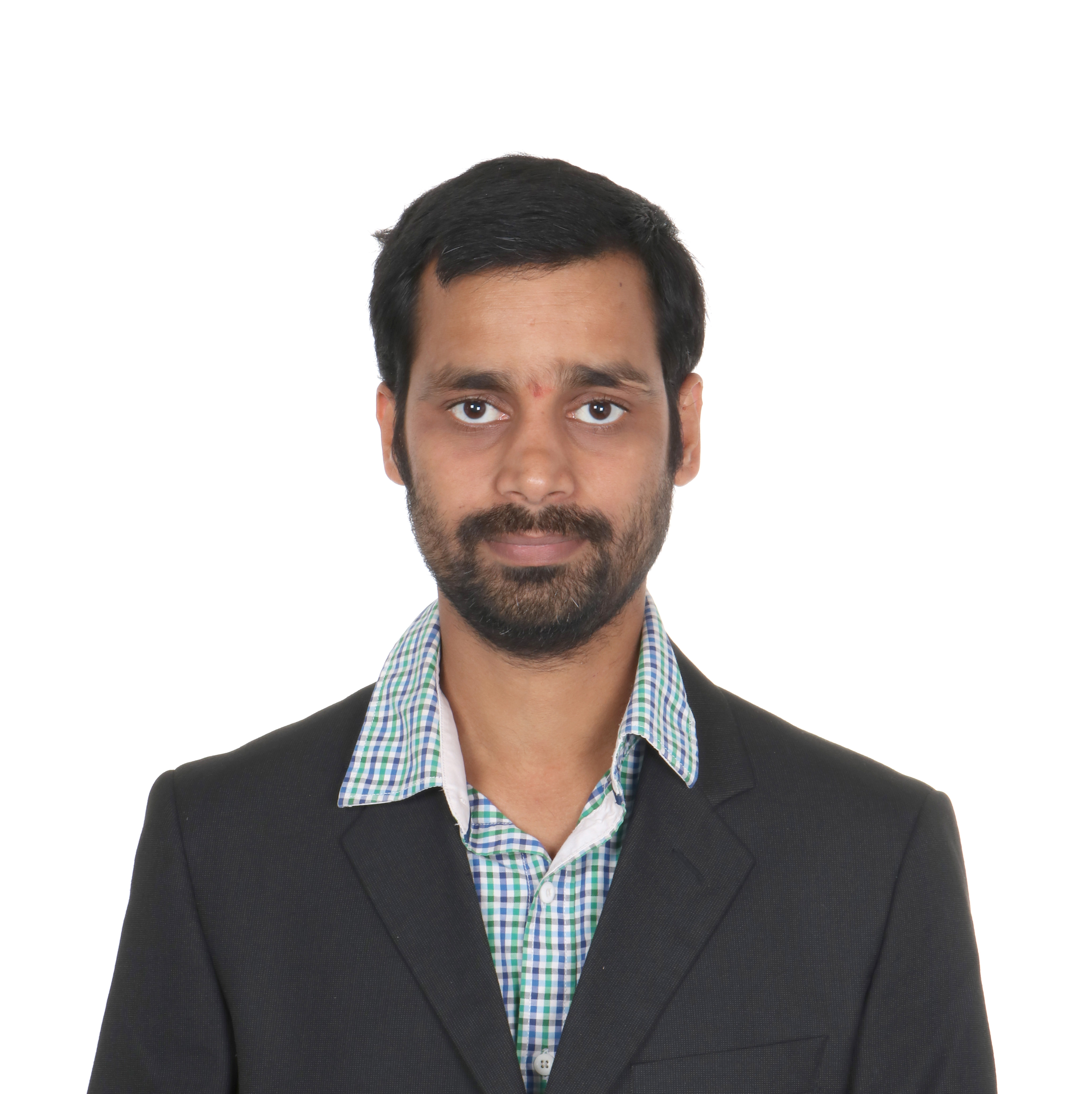
Narsing Kumar Jha
Assistant Professor
Department of Applied Mechanics, IIT Delhi
PhD Students
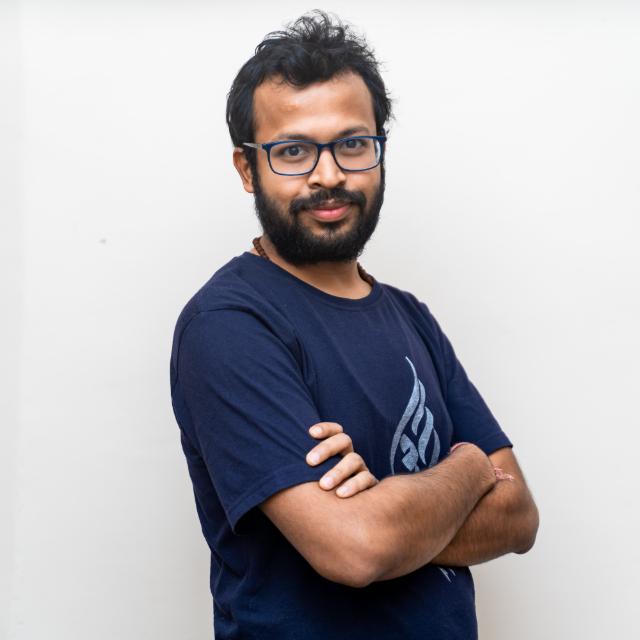
Tanmay Agrawal
2021-Present
(Co-advised by V.K. Chalamalla)
Research Topic:
Experimental and
Numerical Investigation of the Mixing Dynamics in Air Curtains
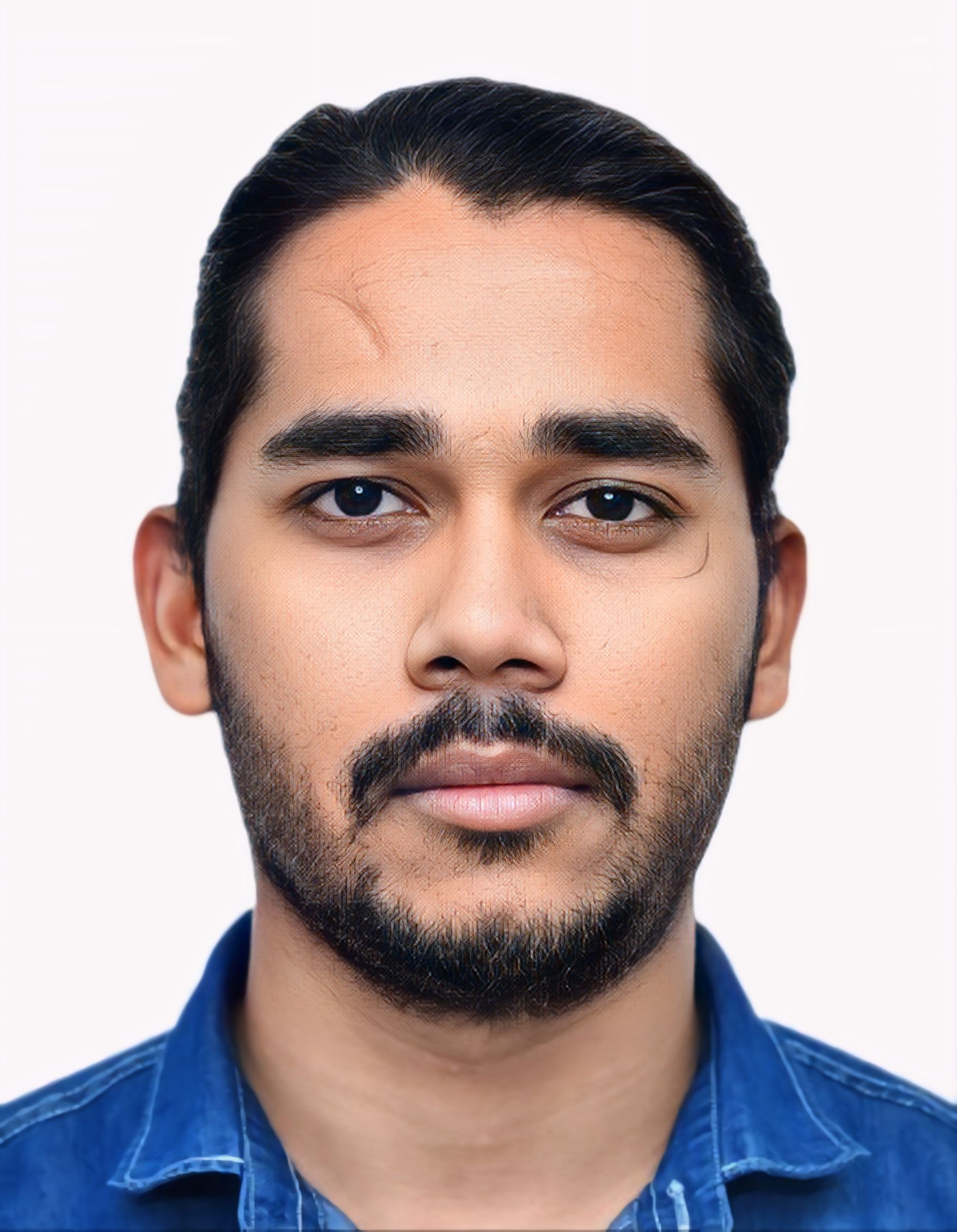
Manoj Kumar Gupta
2021-Present
Research Topic:
Experimental Study of Interaction of Vortex Rings with
Droplets
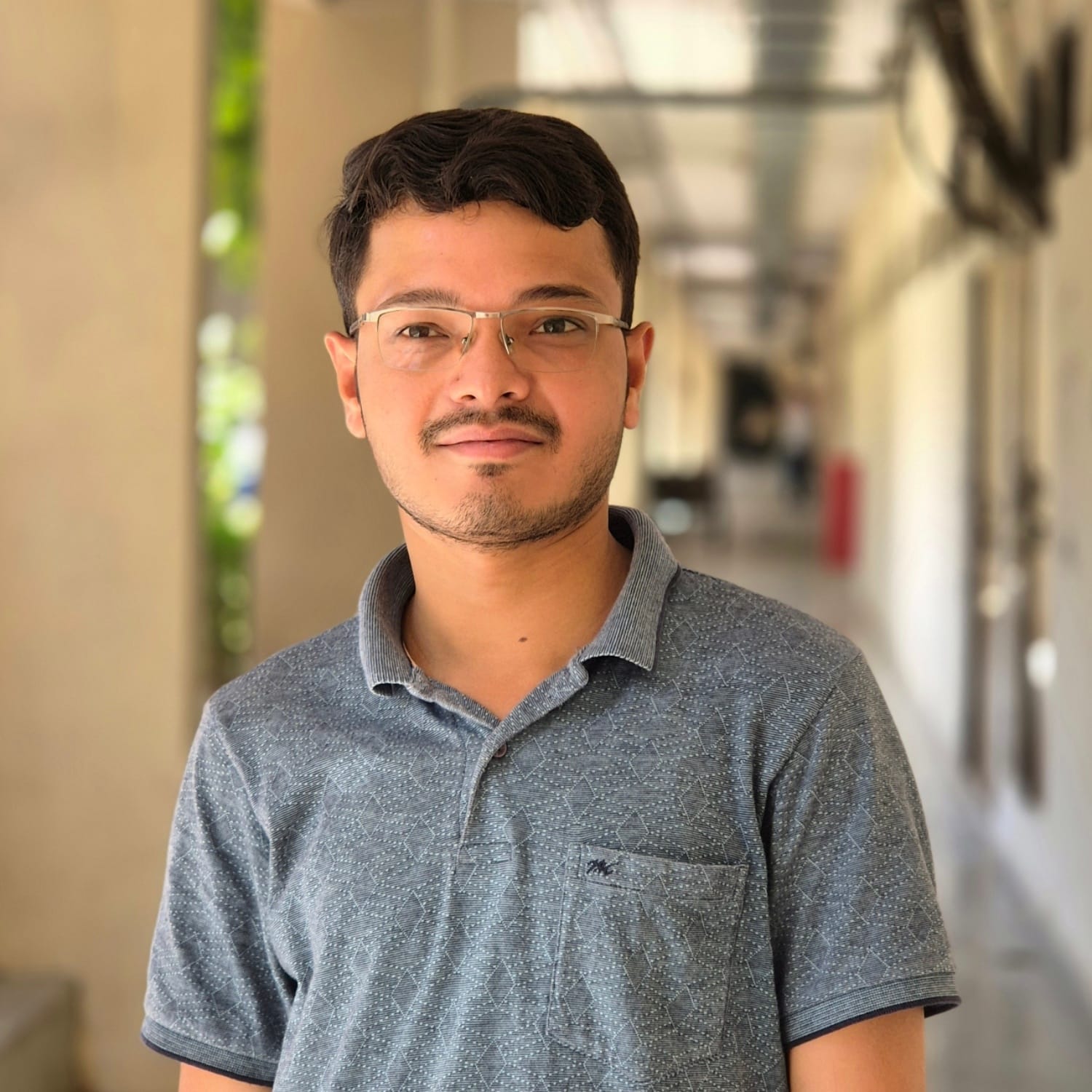
Sitaram Sahu
2022-Present
(Co-advised by Sachin Kumar B)
Research Topic:
Development of
Bio-Fluidic Model to Study the Role of Hemodynamic Forces on Cancer Metastasis
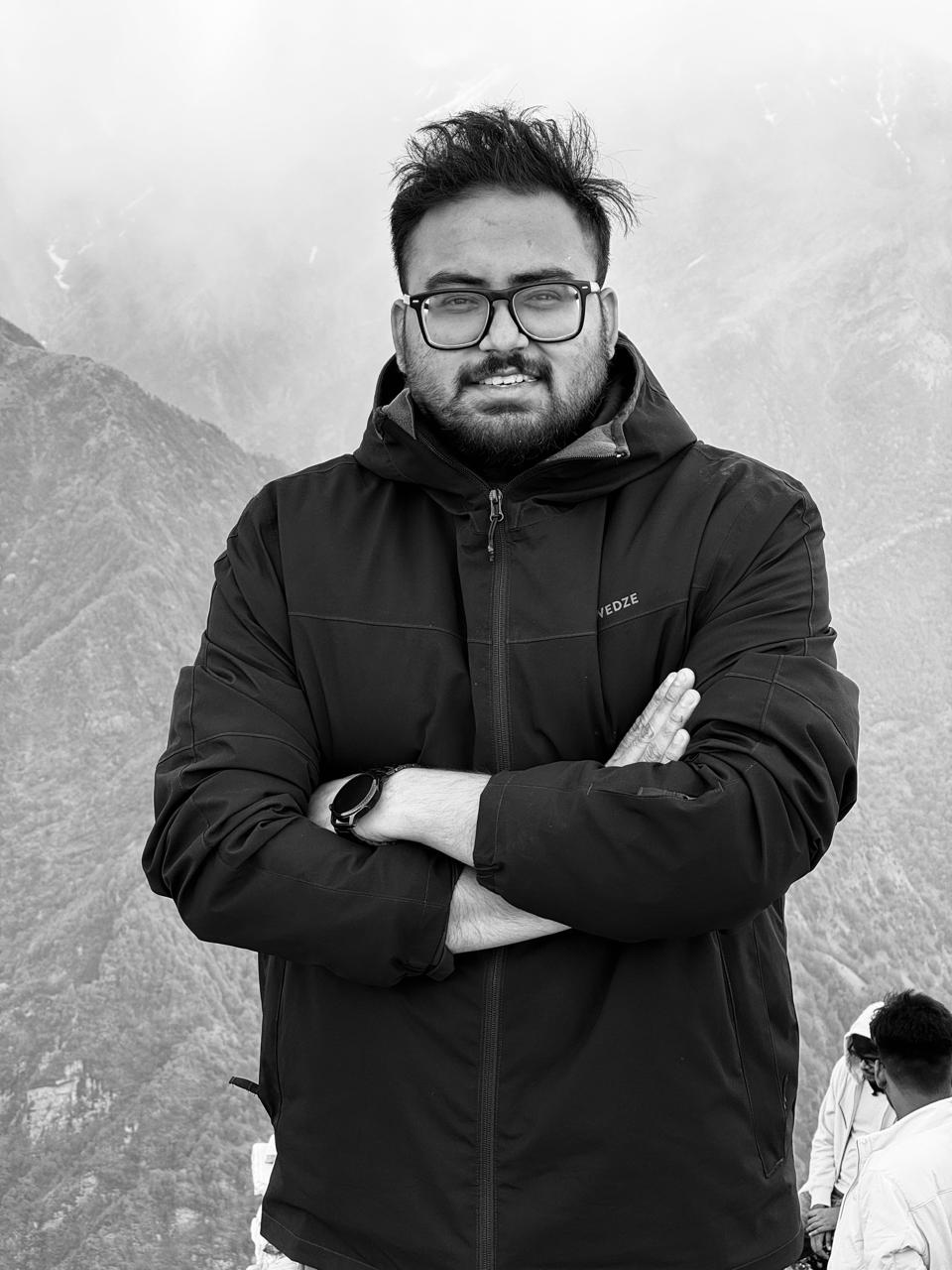
Suraj Narayan Dhar
2022-Present
Research Topic:
Underwater Acoustic Signatures of Interaction of Bubbles and Vortices
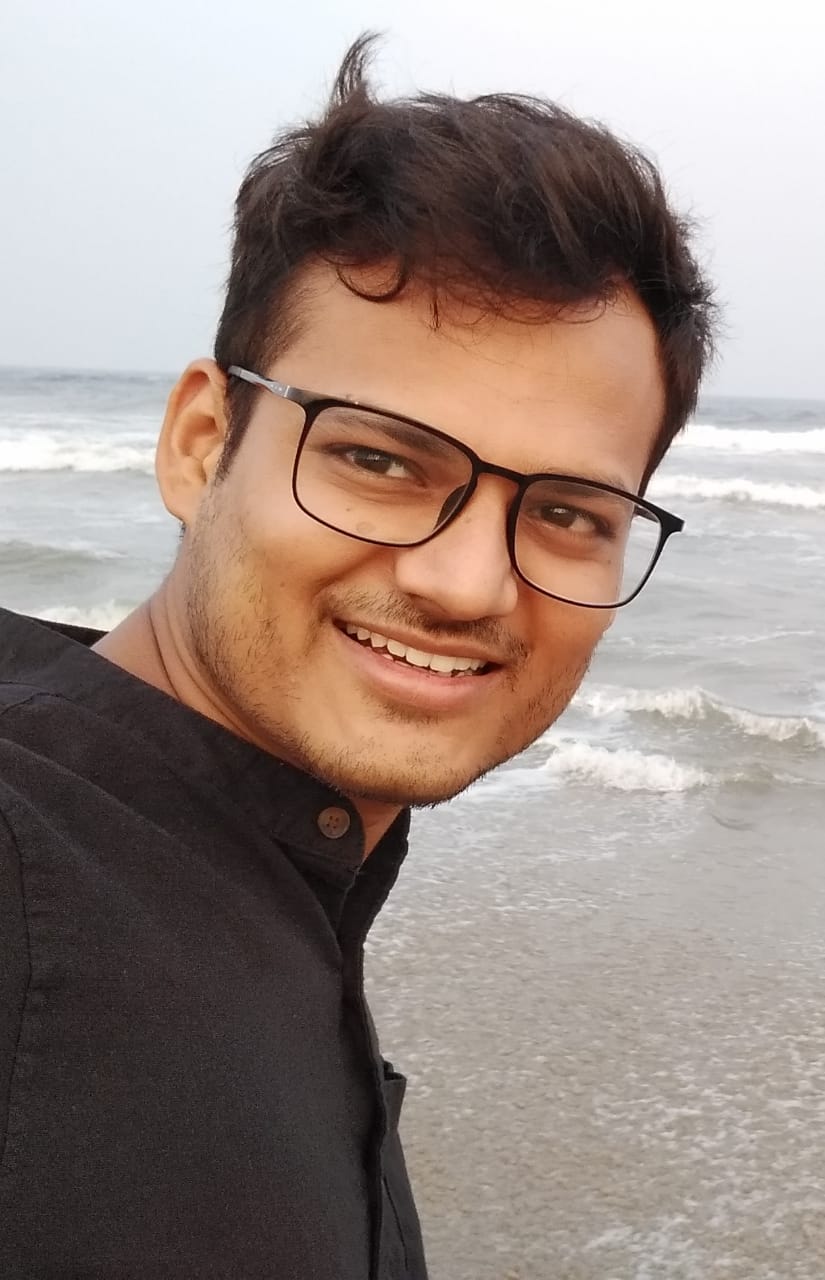
Abhijeet Singh
2022-Present
(Co-advised by Deepanshu Shirole)
Research Topic:
Experimental Investigations on Dry Granular Mass Flow using Flume based Physical Model
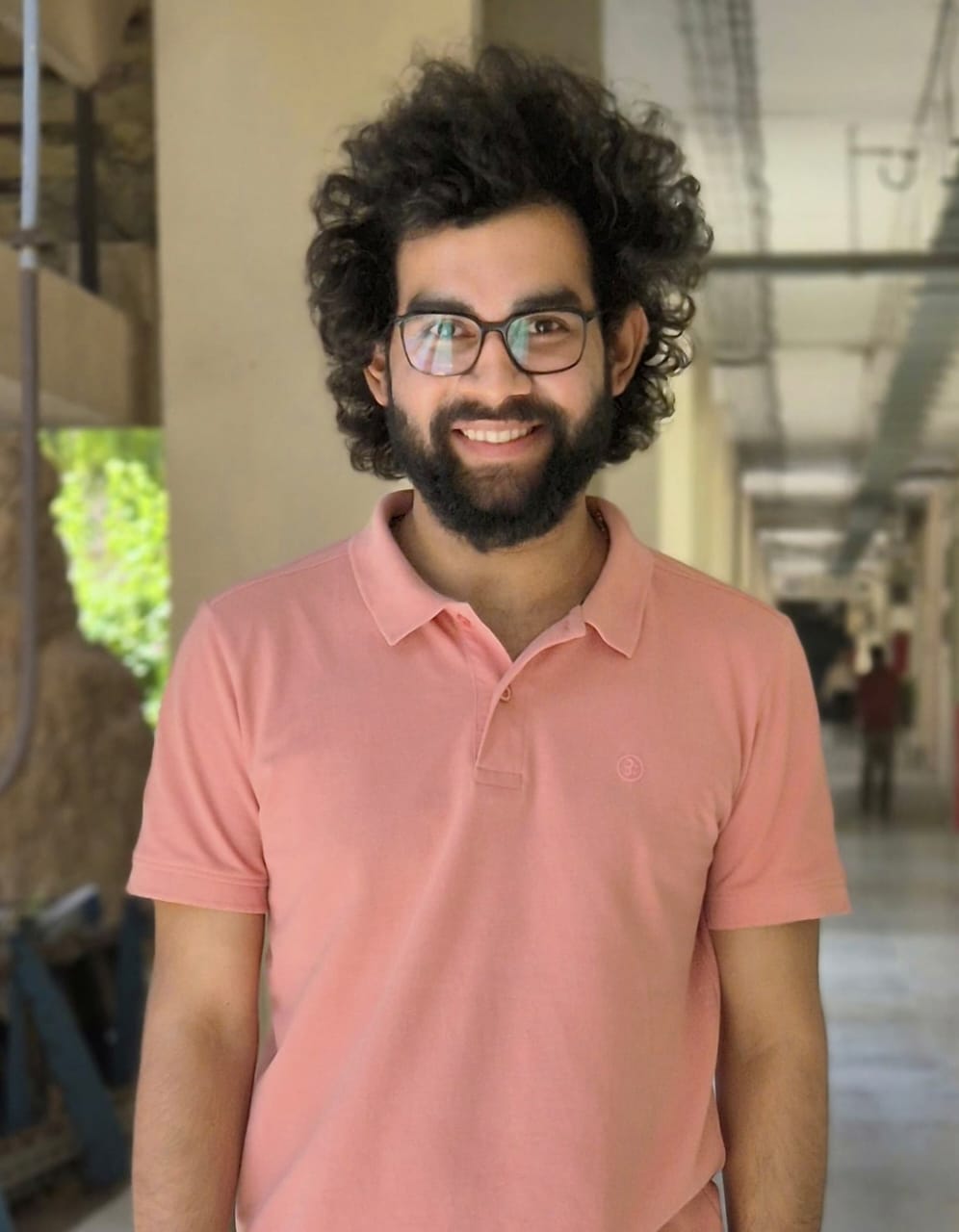
Bhramar Sanjay Pustode
2023-Present
(Co-advised by Amitabh Bhattacharya)
Research Topic:
Energy Extraction via vortex Induced Vibration
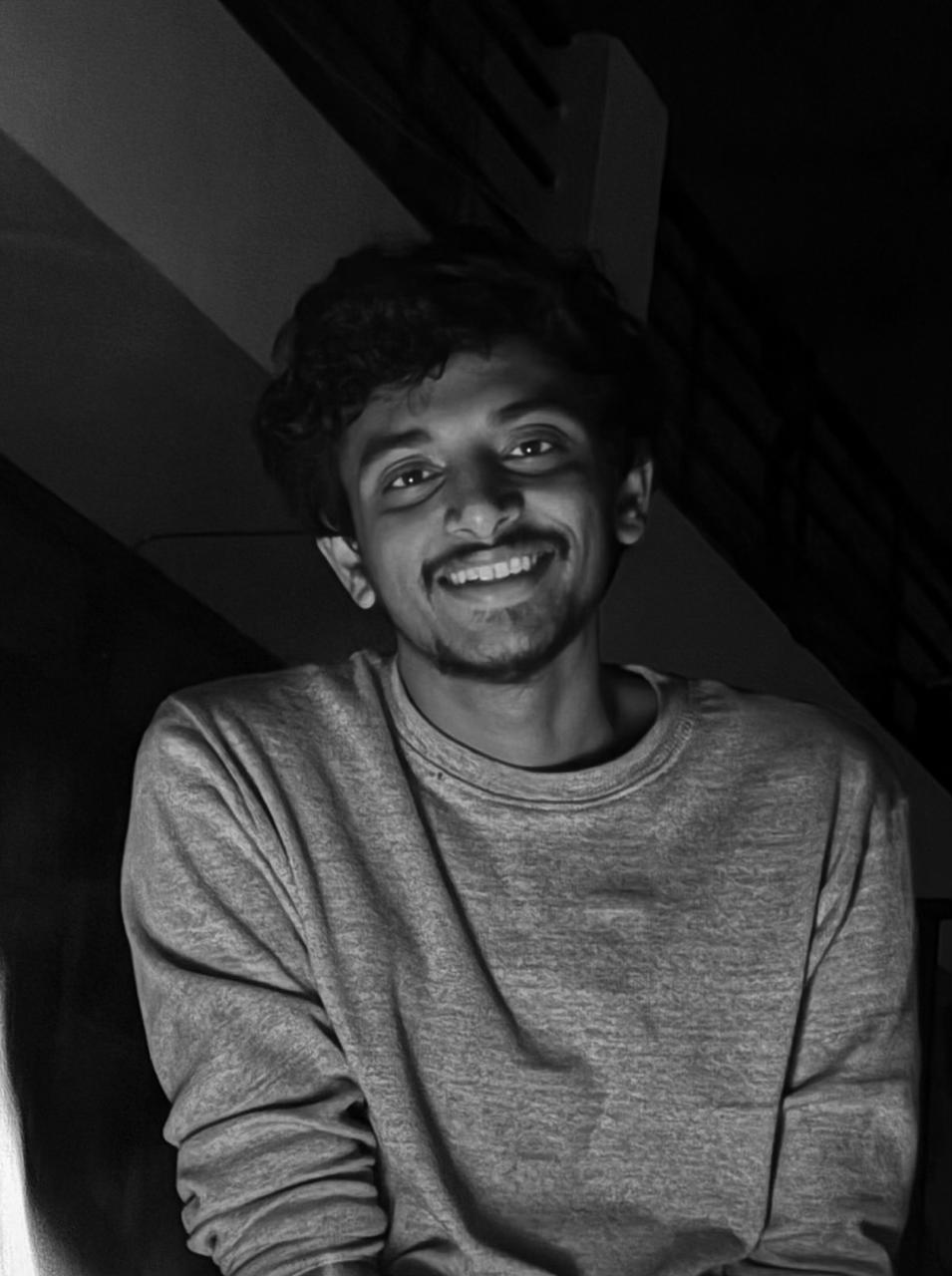
Vamsi Krishna Bankapalli
2023-Present
(Co-advised by Jay Dhariwal)
Research Topic: IAQ Management in Polluted Cities: The Role and Consequences of Building Ventilation
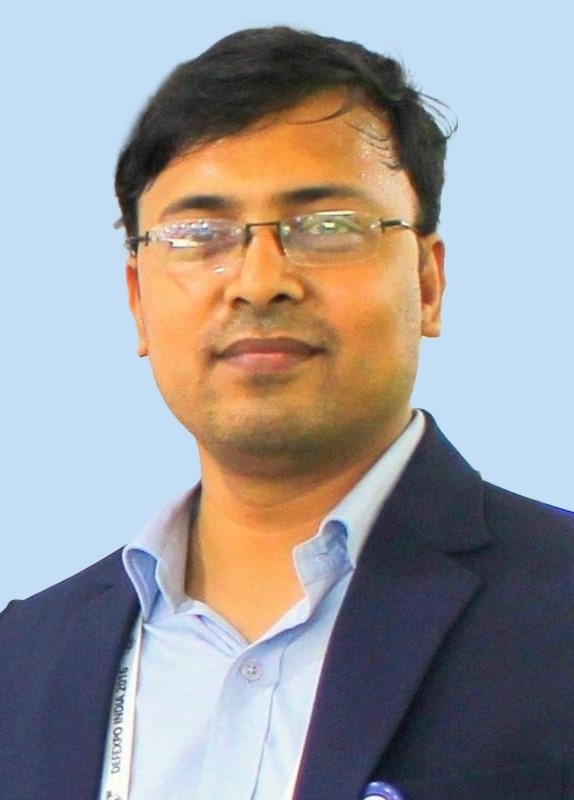
Kumar Saurabh
2023-Present
(Co-advised by V.K. Chalamalla)
Research Topic:
Drag Reduction Strategies for Green Shipping
MS(Research) Students
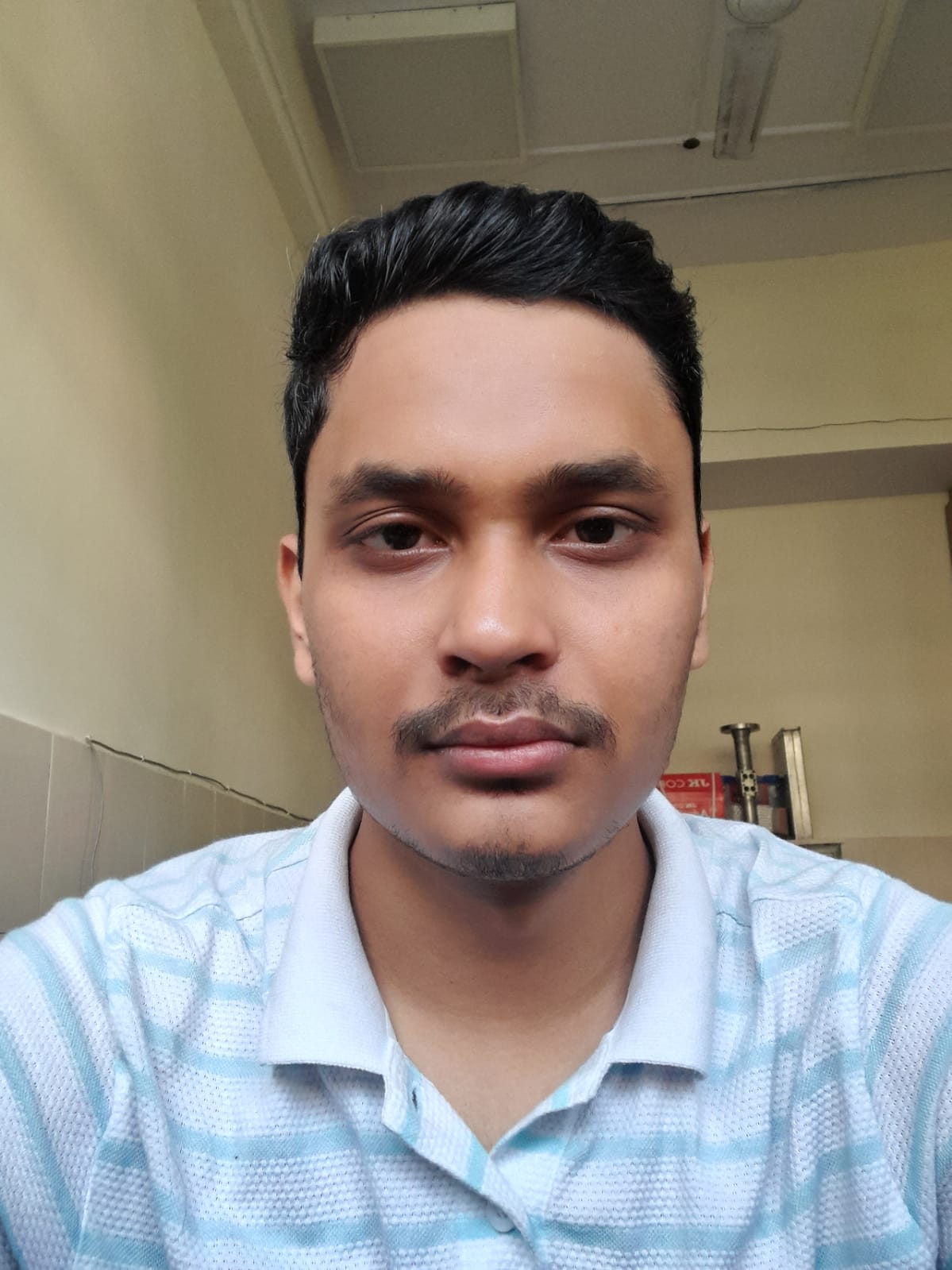
Vinay Likhar
2021-Present
Research Topic:
Trasition and Turbulence in Viscoelastic Channel Flows
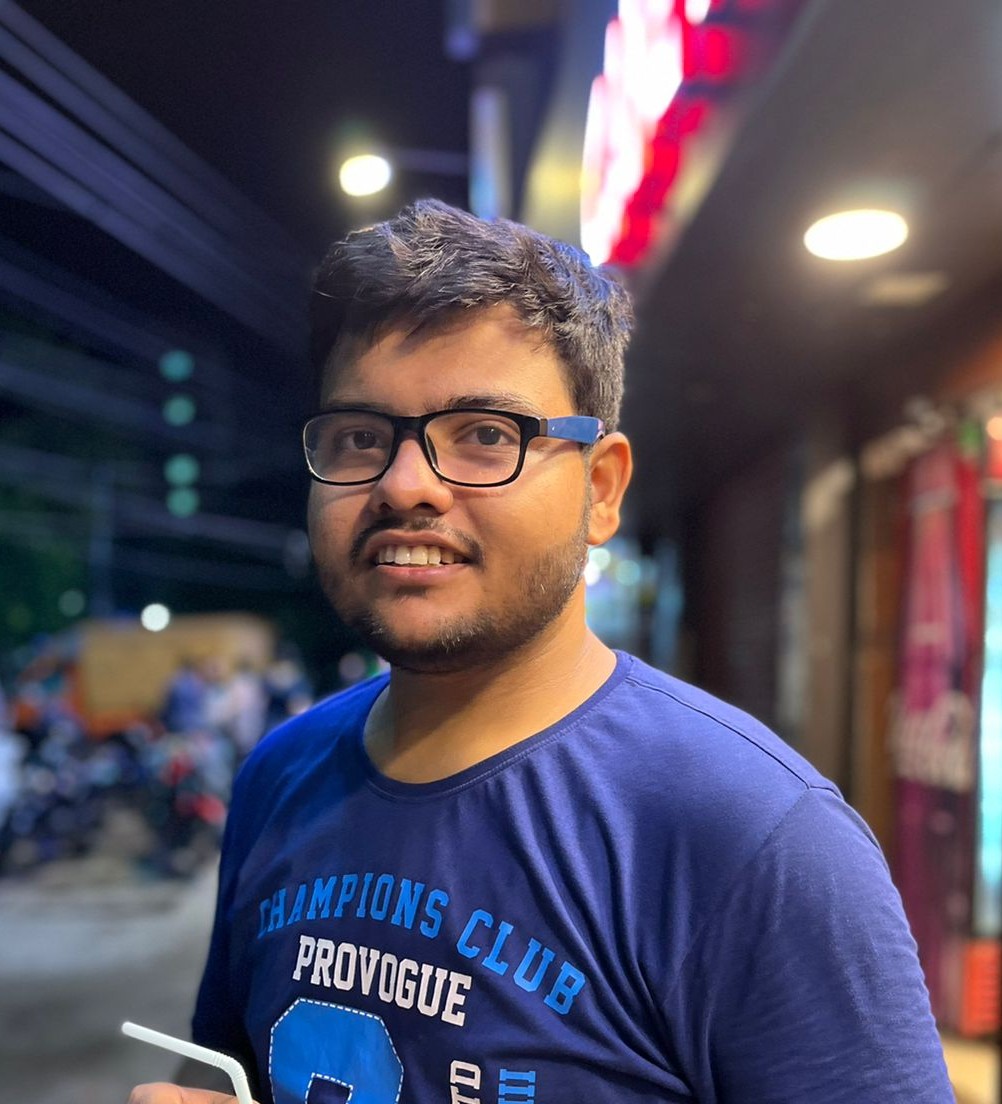
Deeptanu Das
2022-Present
(Co-advised by V.K. Chalamalla)
Research Topic:
Numerical Simulation
of Air Curtain Flows

Aditya Mishra
2023-Present
(Co-advised by Ajeet Kumar)
Research Topic:
Numerical Simulation and Physical Modelling of
Vortex Induced Vibrations in Dam Gates
PG Students
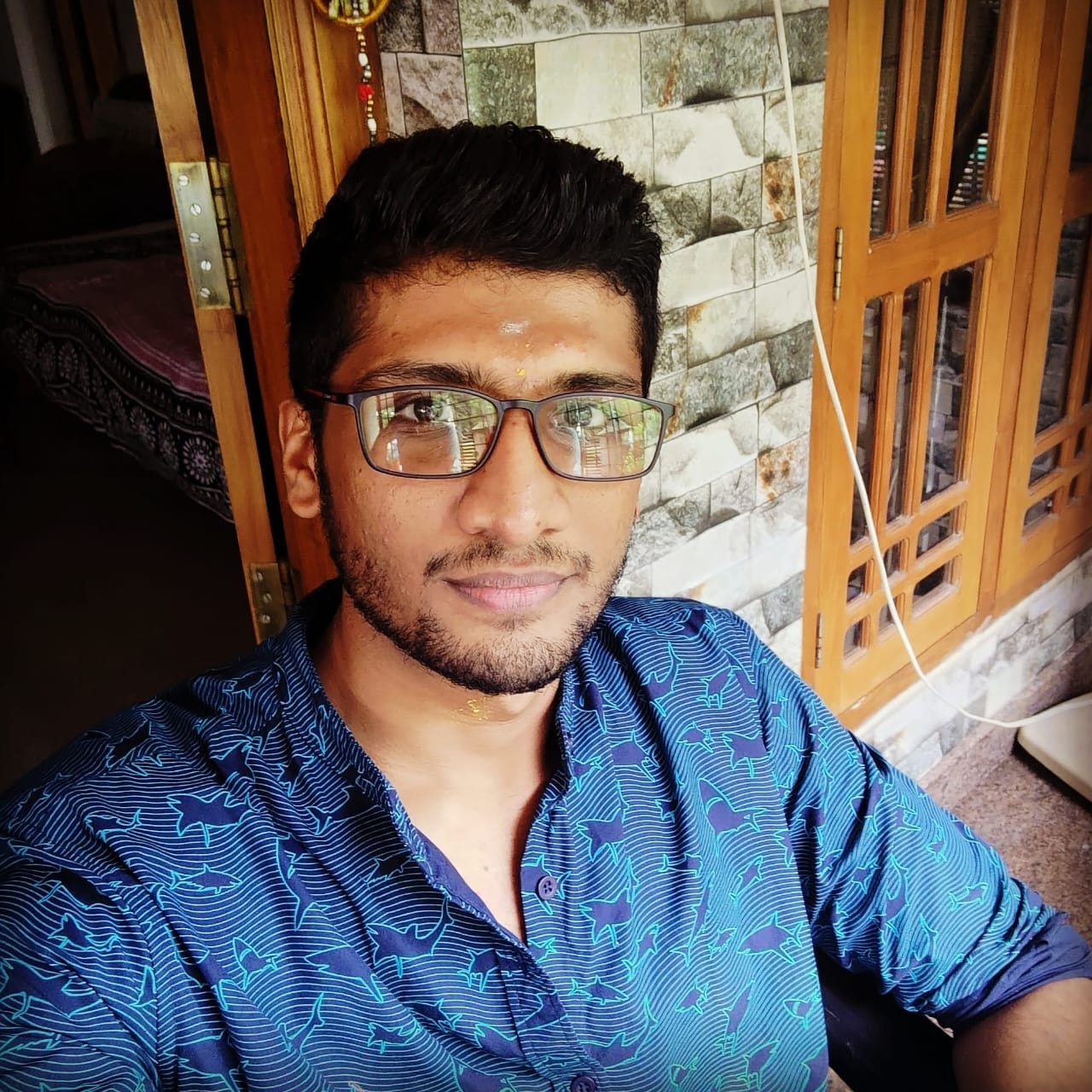
Abhiram K
2022-Present
Research Topic:
Design and Development of Wake Homing Decoy
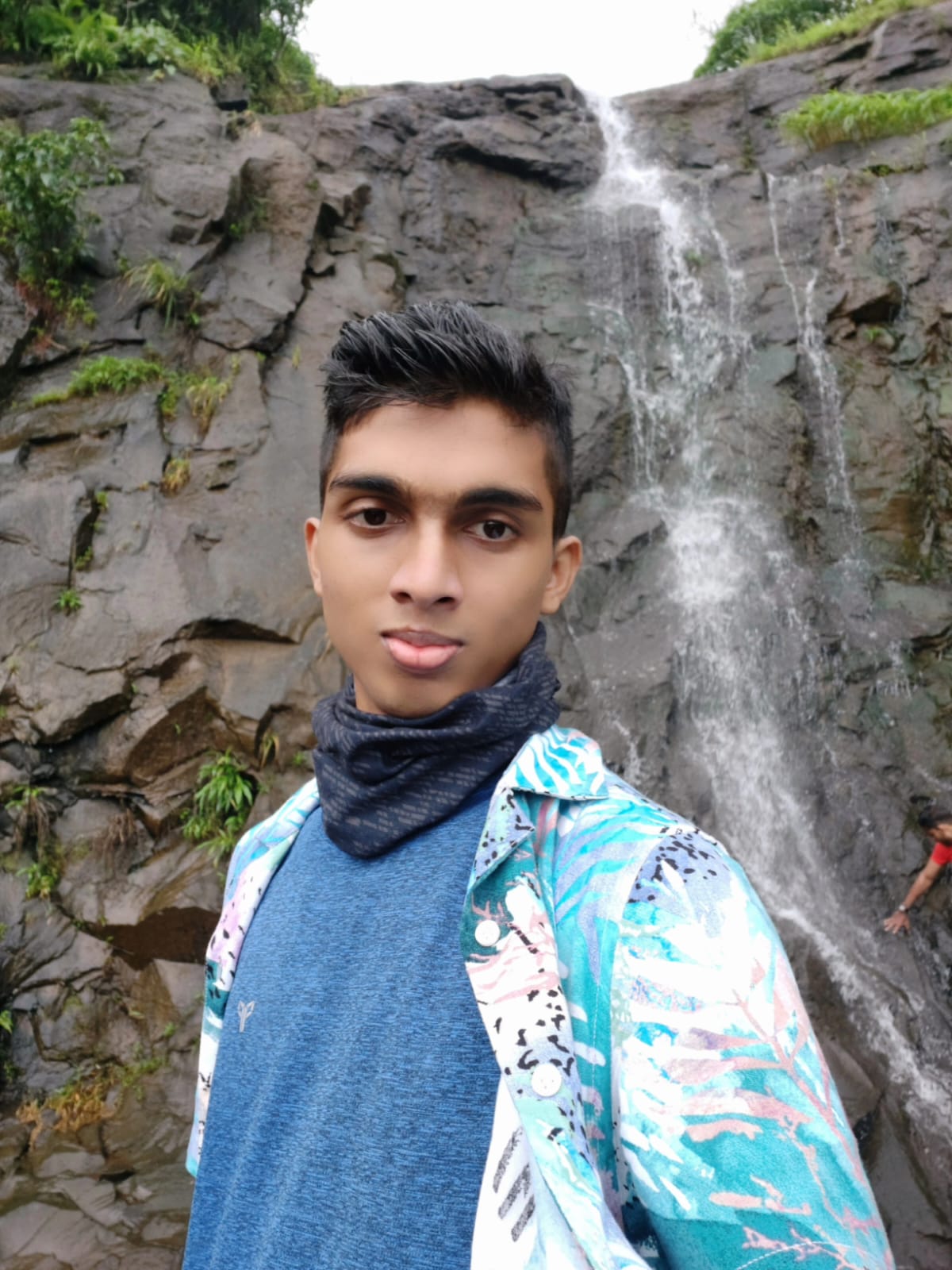
Bhanu Sahu
2022-Present
Research Topic:
Development and Construction of UUV (unmanned underwater vehicle)
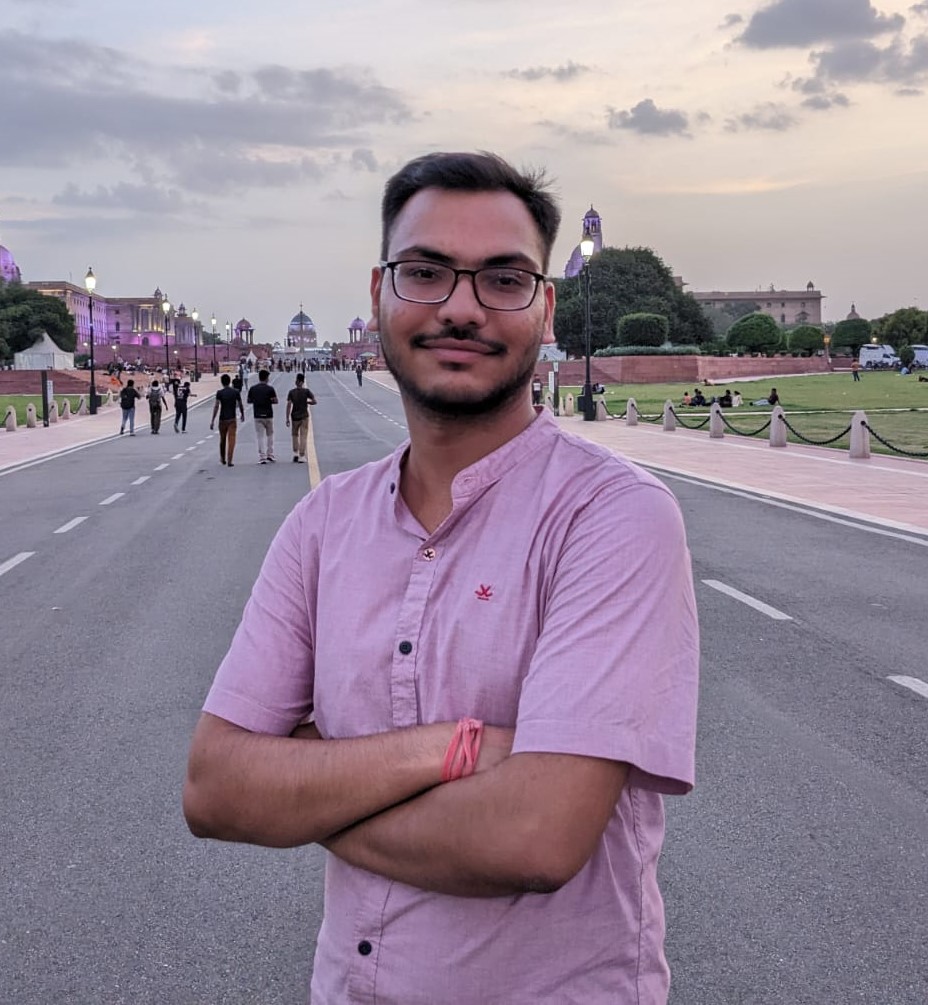
Aman Kumar
2022-Present
Research Topic:
Design and Optimisation of Shower Head
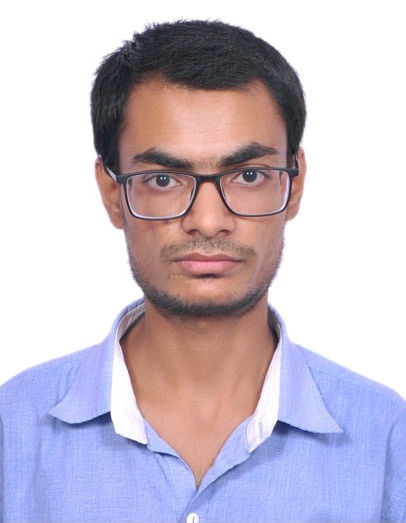
Sujeet Kumar
2022-Present
Research Topic:
Elastic Instability for High Reynolds Number Flow

Priyam
2022-Present
Research Topic:
Energy Extraction from Angular Vortex Induced Vibrations
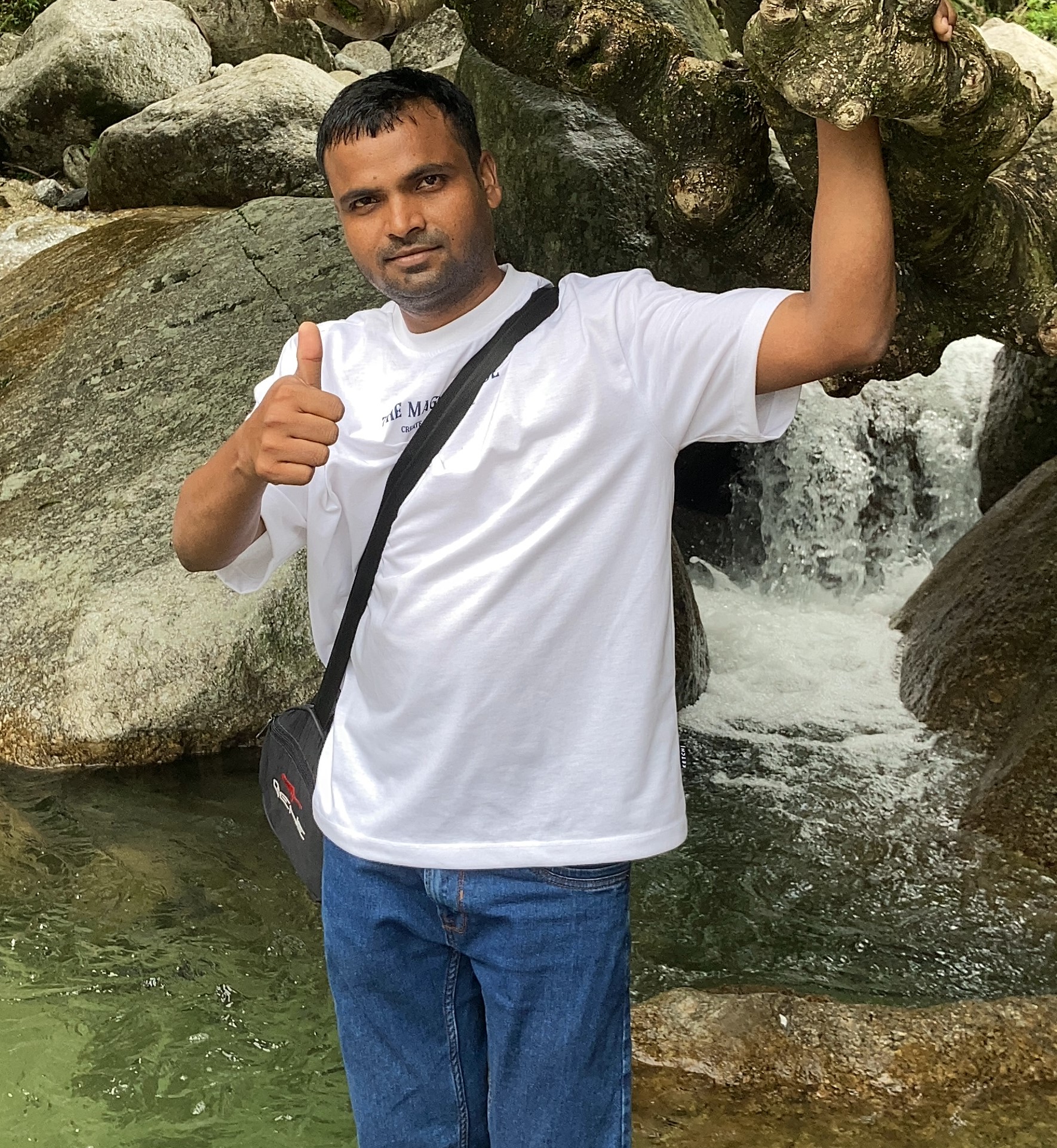
Dinesh Kumar
2022-Present
Research Topic:
Design and Fabrication of a Underwater Vehicle
Project Associates
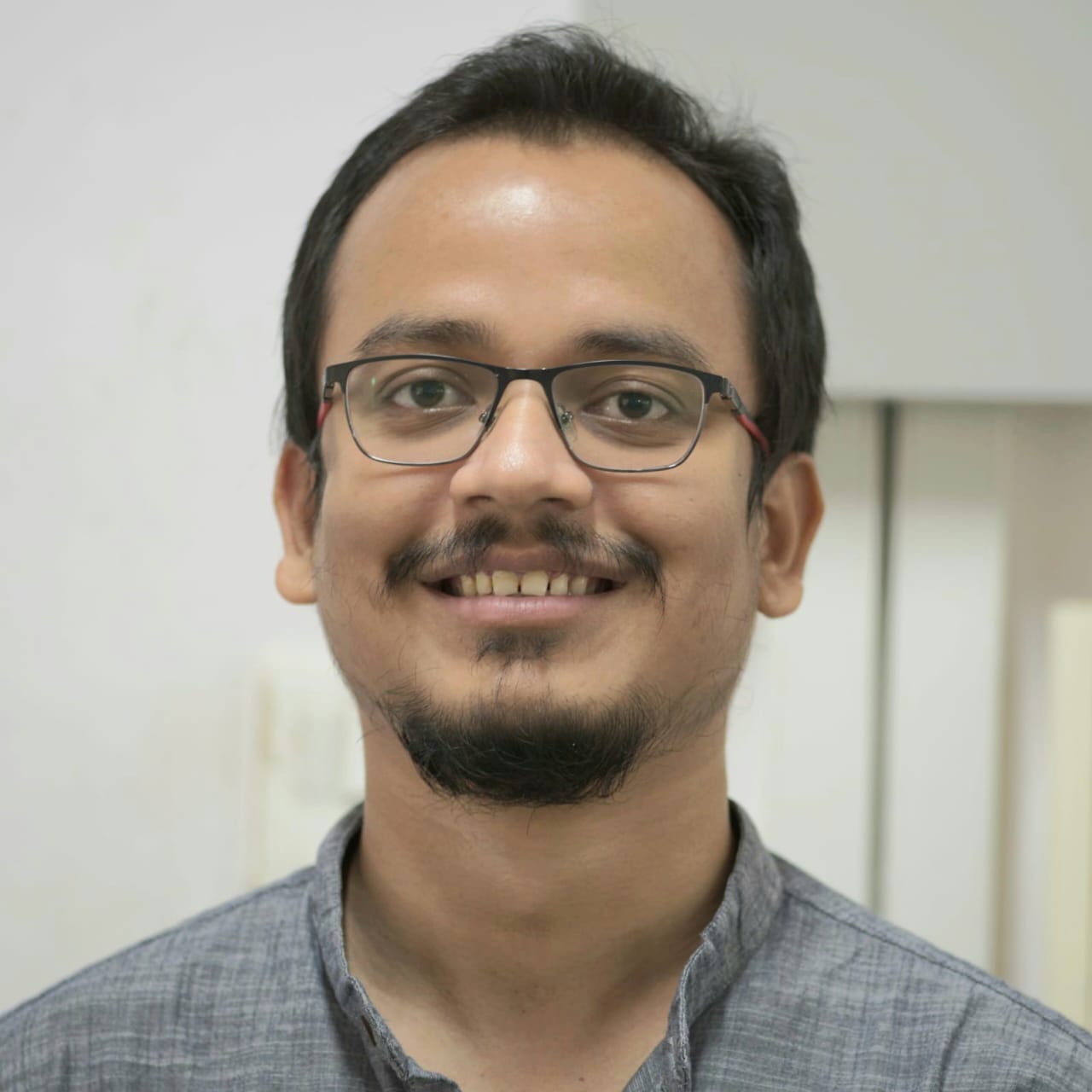
Ritwik Das
2022-Present
Research Topic:
Search for Universal Mechanisms in Passive Drag Reduction in Turbulent Flows
B Tech Students
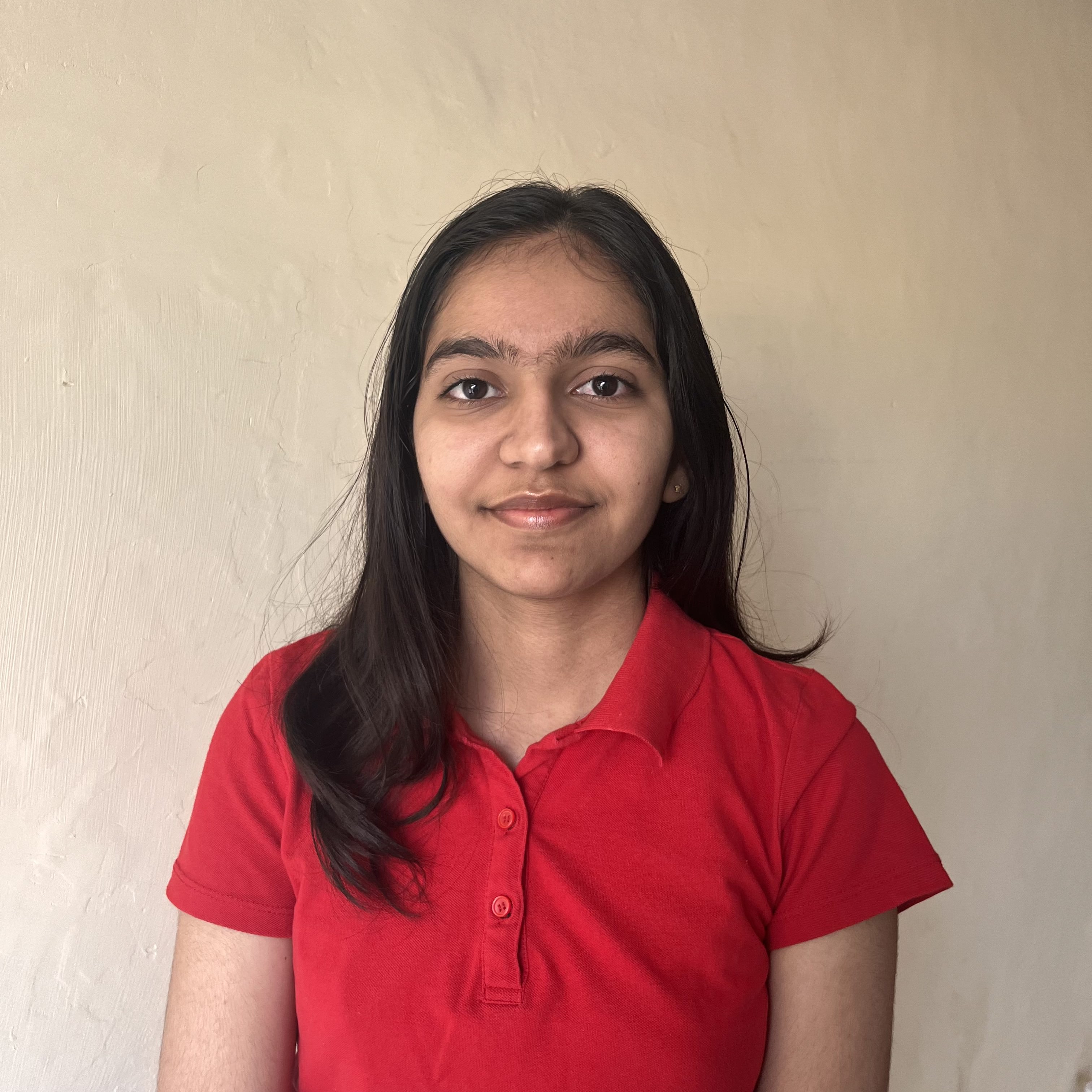
Preeti Choudhary
July 2023-Present
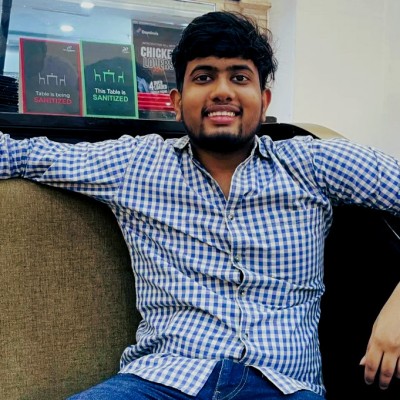
Shrijit Shaswat
July 2023-Present
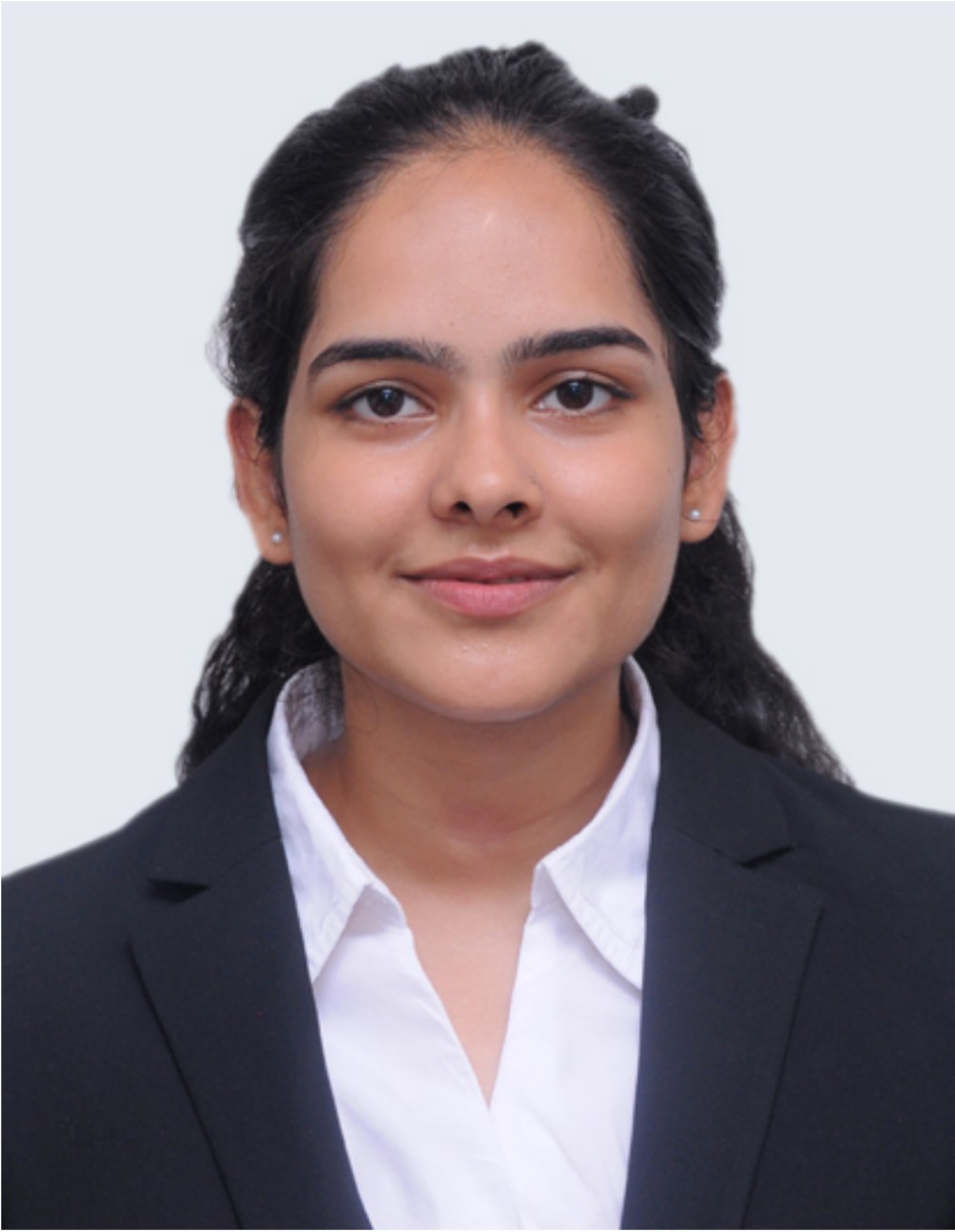
Kanishka
July 2023-Present
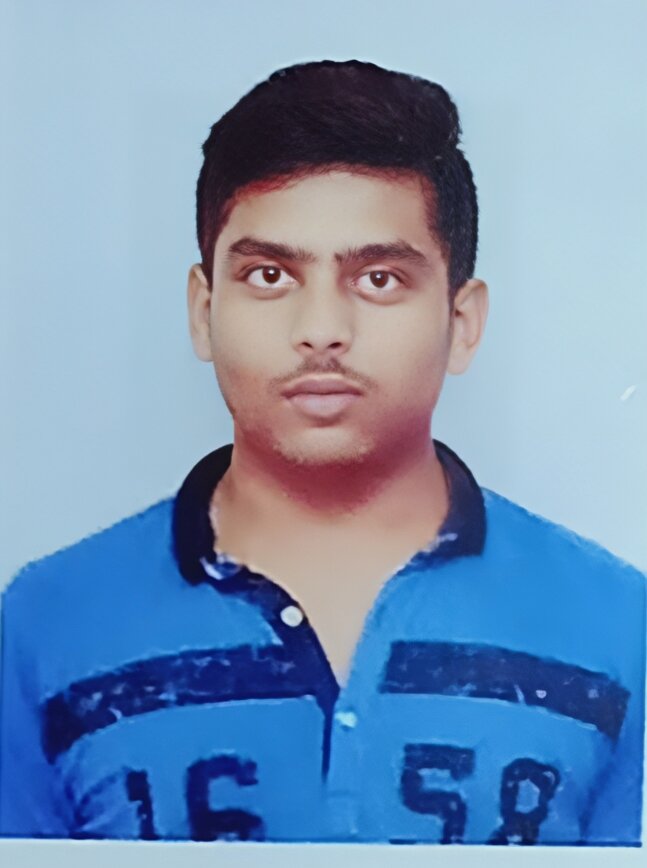
Akula Jayanth
July 2023-Present
Alumni
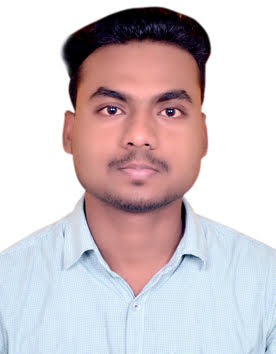
Hari Prasad Bind
Graduated '22
(Interaction of Vortex Ring with Droplets)
Currently at IOCL

Adarsh Saini
Graduated '22
(Origin of Hydraulic Jump in a 2D Channel Flow)
Currently at IIT Roorkee
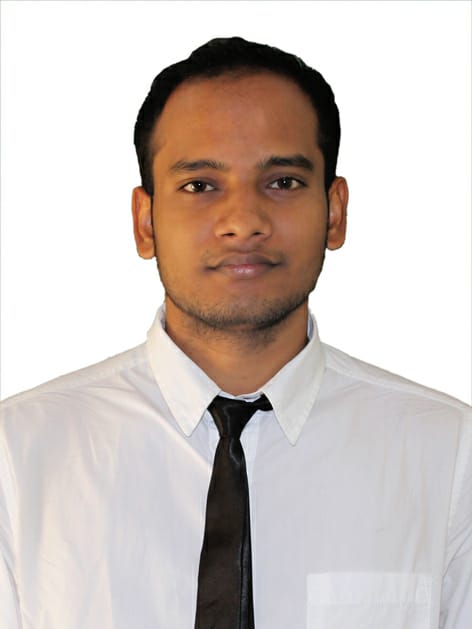
Amit Kumar
Graduated '22
(Design and Fabrication of Energy Harvestor Based on Vortex Induced Vibration)
Currently at HCL
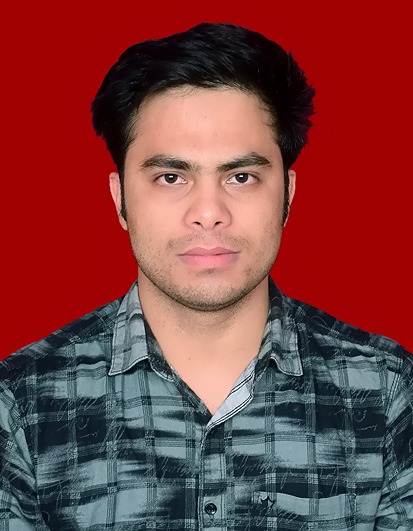
Bikrant Rawat
Graduated '22
(Design and Optimization of Shower Head)
Currently at ISRO

Shubham Toke
Graduated '23
(Turbulent Flow in Microfluidics)
Currently at TVS Motor
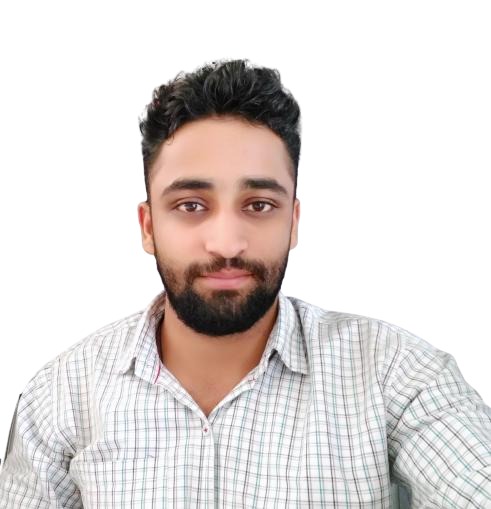
Avinash Bhamu
Graduated '23
(Design and Fabrication of a Remotely Operated Underwater Vehicle)
Currently at Oceaneering
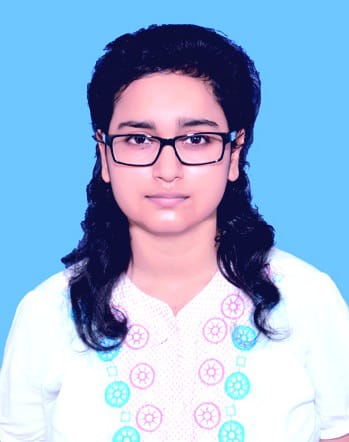
Riya Chaudhary
Graduated '23
(Energy Extraction from Vortex Induced Vibrations)
Currently at Bajaj Auto
FE2B Facilities
Experimental Facilities
Particle image velocimetry (PIV) measurements in air curtain flows
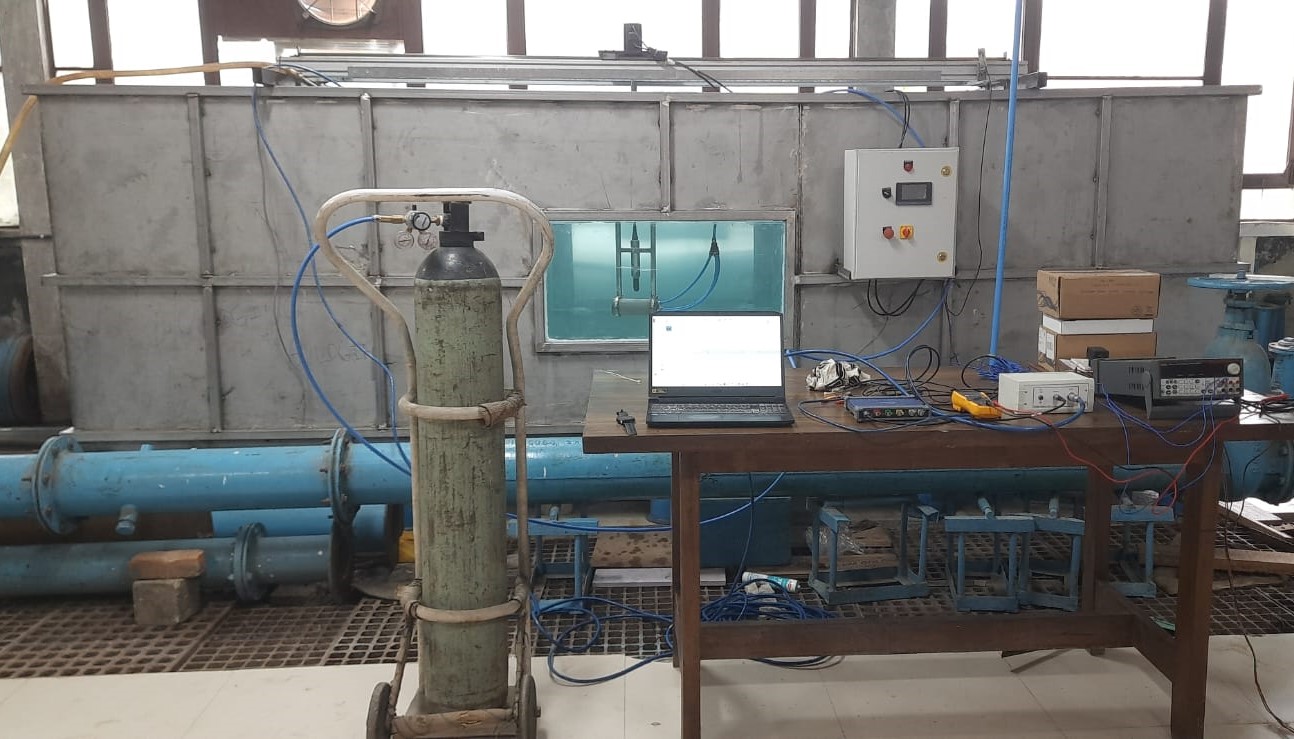
Acoustic measurement of compressed air bubble from a sintered nozzle using Hydrophone SONAR NEPTUNE
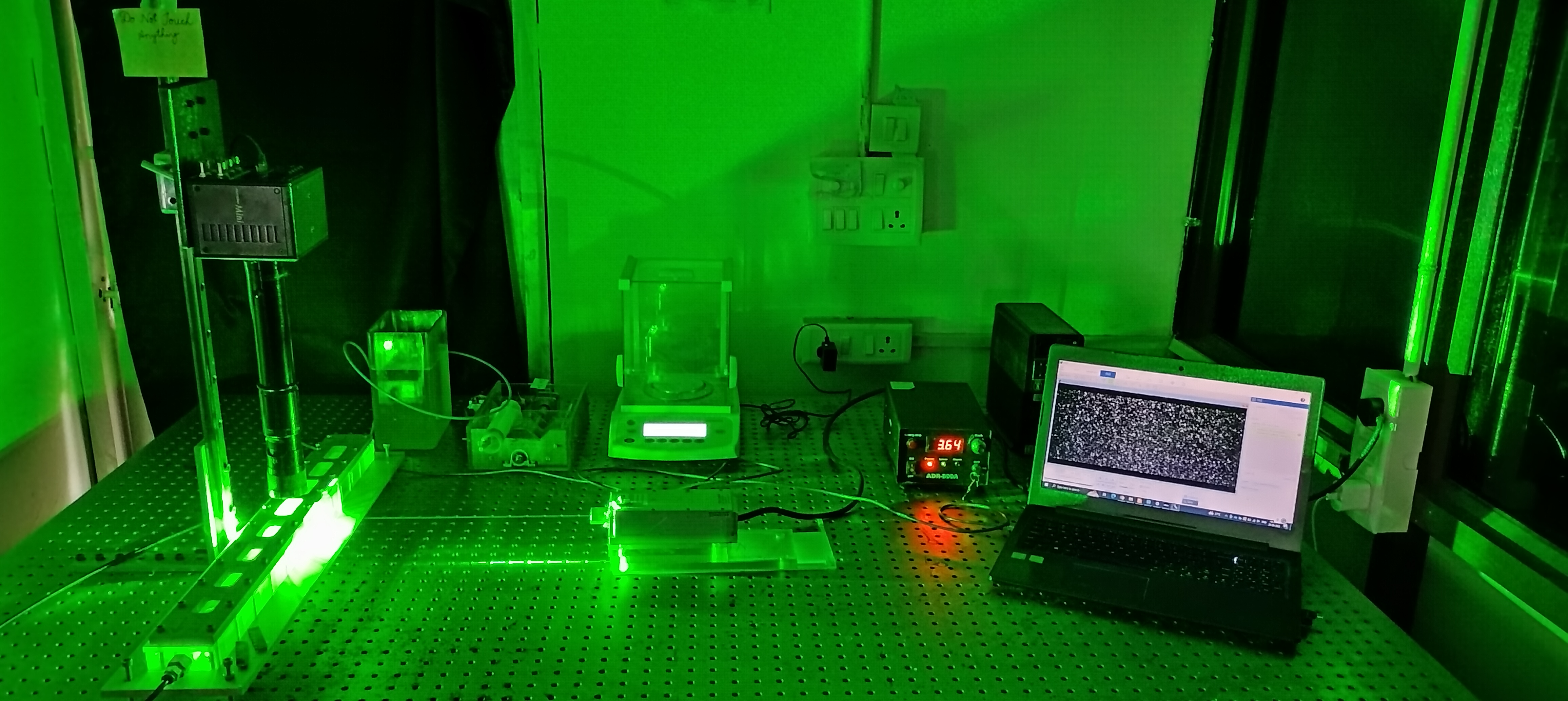
Flow visualization using time resolved µPIV in a 2D microchannel to study biofluid dynamics and flow instabilities
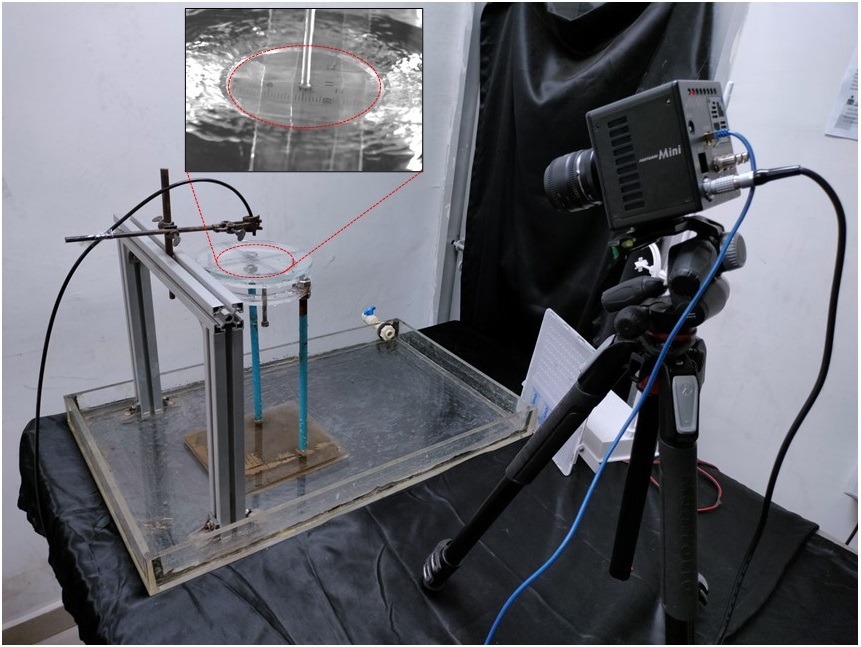
Study of circular hydraulic jump (CHJ)

Remotely operated underwater vehicle
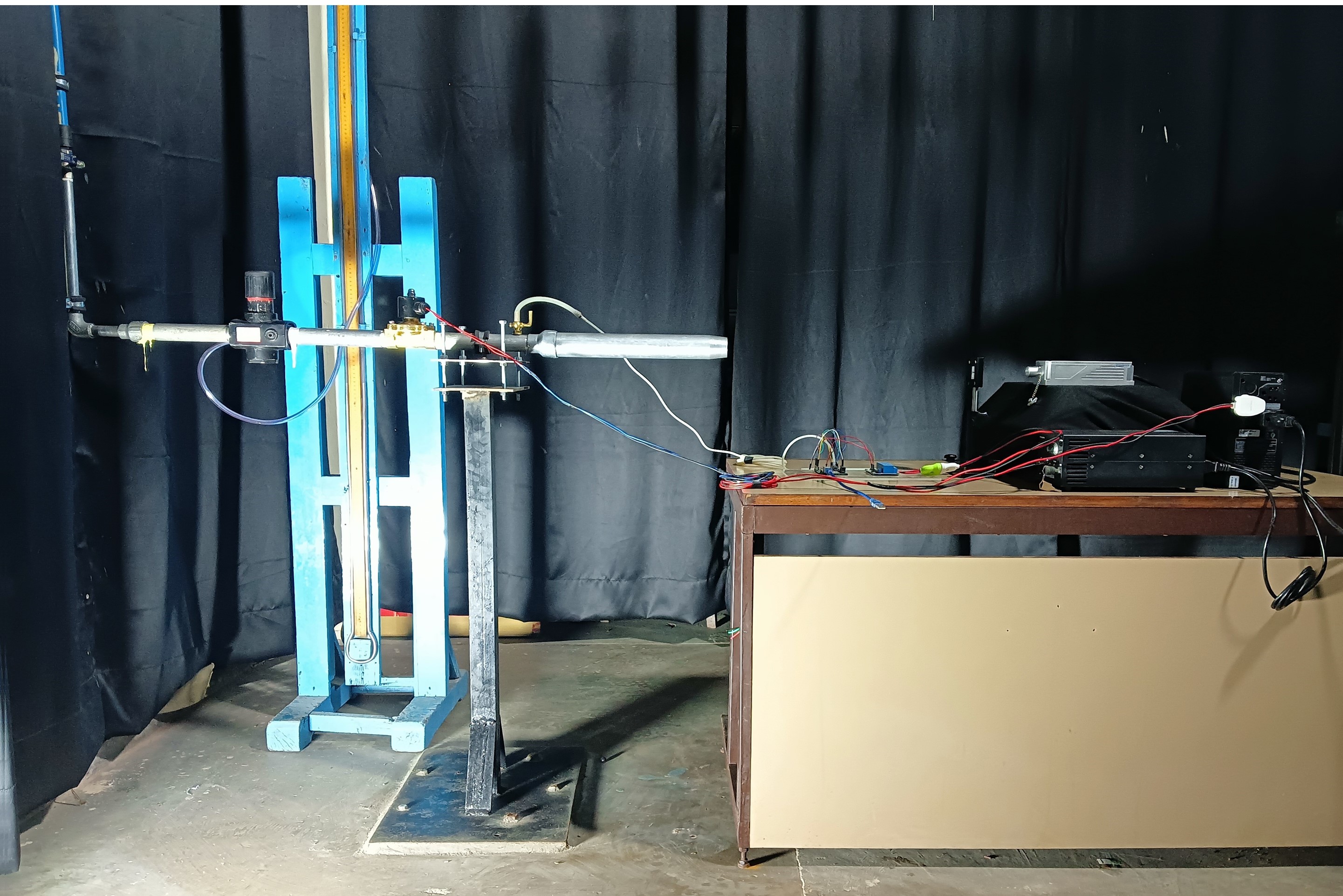
Multiphase turbulent flow facility to study cloud microphysics
Publications
Journals
Download the PDF only for personal usage. Copyrights of the journal is with its publisher and request them for professional usage.
Interaction of a vortex ring with a single bubble: Bubble and vorticity dynamics.
Narsing
K. Jha, R. N. Govardhan, Journal of Fluid Mechanics 773, pp 460-497 (2015). PDF, Journal
Controlling air solubility to maintain “Cassie” state for sustained drag reduction.
D.
Dilip, Narsing K. Jha, Raghuraman N. Govardhan, M.S. Bobji, Colloids and Surfaces A: Physicochemical and
Engineering Aspects 459, pp 217-224 (2014). PDF, Journal
On the origin of the circular hydraulic jump in a thin liquid film.
Rajesh K. Bhagat,
Narsing K. Jha, P. F. Linden, D. Ian Wilson, Journal of Fluid Mechanics 851, R5, pp 1-11 (2018). PDF, Journal
Effect of bubble distribution on wall drag in turbulent channel flow.
Narsing K. Jha, A.
Bhatt, R. N. Govardhan, Experiments in Fluids 60(8), 127 (2019). PDF, Journal
Effect of human passage on air curtain effectiveness in the doorways of a building.
Narsing
K. Jha, Lilian Darracq, Daria Frank, Paul F Linden, Journal of Fluid Mechanics (2019). PDF
Elastically driven Kelvin-Helmholtz-like instability in planar channel flow.
Narsing K.
Jha, Victor Steinberg, PNAS 118,(34); e2105211118 (2021).
Implications of the spatiotemporal distribution of CO2 on indoor air quality: A field study with reduced-order modeling.
Vamsi Bankapalli, Narsing K Jha, Jay Dhariwal, Saran Raj K, Seshan Srirangarajan, Building and Environment 269, 112451 (2025) Journal
Injectable Hydrogels for Liver: Potential for Clinical Translation.
Ashwini Vasudevan, Doyel Ghosal, Sita Ram Sahu, Narsing K Jha, Pooja Vijayaraghavan, Sachin Kumar, Savneet Kaur, Chemistry: An Asian journal (2024) Journal
Performance and flow dynamics of heavy air curtains using experiments and numerical simulations.
Agrawal, T., Agarwal, S., Chalamalla, V.K, & Jha, N.K. Environmental Fluid Mechanics (2023) Journal
Universal coherent structures of elastic turbulence in straight channel with viscoelastic fluid
flow.
Narsing K. Jha, Victor Steinberg, Science Advances; arXiv preprint arXiv:2009.12258
(2020).
Contaminant transport by human passage through an air curtain separating two sections of a corridor: Part I–Uniform
ambient temperature.
Narsing K Jha, D Frank, PF Linden, Energy and Buildings 236, 110818 (2021) Journal
Contaminant transport by human passage through an air curtain separating two sections of a corridor: Part II–Two
zones at different temperatures.
Narsing K Jha, D Frank, L Darracq, PF Linden, Energy and Buildings 236, 110728 (2021) Journal
Air curtains: validation of results from small-scale laboratory waterbath experiments by real-scale measurements in climate chambers and
numerical simulations.
D Frank, Narsing K Jha, FGH Koene, REJ Kemp, A Twerda, PF Linden, Energy and Buildings 277, 112538 (2022) Journal
Numerical investigation of air curtain flows in the doorway of a building using RANS and LES.
Tanmay Agrawal,
Narsing Kumar Jha, Vamsi Krishna Chalamalla arXiv preprint arXiv:2305.06697 (2023) Journal
Improvement in sealing effectiveness of air curtains using positive buoyancy.
Tanmay Agrawal, Narsing K Jha,
Vamsi K Chalamalla Computers & Fluids 263, 105948 (2023) Journal
Elastic instability, flow relaminarization and suppression of vortices behind a cylinder for viscoelastic
versus Newtonian fluid flow.
Vijay Kumar, Dong Yang, Atul Varshney, Narsing K. Jha, and Victor
Steinberg, Physical review letters; Under review (2020).
Interaction of vortical structures with a single bubble in fully developed turbulent channel
flow.
Narsing K. Jha, R. N. Govardhan, International Journal of Multiphase Flow;
Under Review (2019).
Comparison of water bath air curtain measurements with the real-scale air curtain installations.
Narsing K. Jha, Daria Frank, Thomas van-Cann, Frans Cohn, Paul F Linden, Energy and Buildings;
Under Preparation (2020).
Elastic instability and drag modification for an array of circular cylinders in viscoelastic
flow.
Narsing K. Jha, Victor Steinberg, Physical review fluids; Under
preparation (2020).
PhD Thesis (2015). PDF
Conference proceedings (peer-reviewed and published):
Energy Extraction from Fluid Flow via Autorotation of Flat Plate.
Bhramar Pustode, Amitabh Bhattacharya, Narsing Kumar Jha,
Proceedings of the 11th International and 51st National Conference on Fluid Mechanics and Fluid Power (FMFP 2024), Aligarh Muslim University (AMU), Aligarh, India.
(2024), (accepted).
On the origin of the circular hydraulic jump: a differential analysis.
P. F. Linden, R. K.
Bhagat, N. K. Jha and D. I. Wilson, 21st Australasian Fluid Mechanics Conference; Adelaide, Australia
(2018), PDF.
Effect of human walking on air curtain sealing in the doorway of an airtight building..
Narsing K. Jha, Lilian Darracq, Daria Frank, Paul F Linden, Air Infiltration and Ventilation Center (AIVC),
Nottingham, UK (2017), PDF.
Conference abstracts:
Full-scale spatiotemporal CO2 measurements as a proxy for understanding the airborne dispersion of infectious microbes in indoor environments.
Vamsi Bankapalli, Narsing K. Jha, Jay Dhariwal, Saran Raj K, Seshan Srirangarajan, Accepted for presentation in
Healthy Buildings 2025 Asia.
A reduced-order model to visualize transient passive scalar concentration distribution in indoor spaces.
Vamsi Bankapalli, Narsing K. Jha, Jay Dhariwal, Seshan Srirangarajan, Accepted for presentation in
Healthy Buildings 2025 Asia.
Velocity statistics of air curtain flows using LES and PIV.
Tanmay Agrawal, Narsing K. Jha, Vamsi K. Chalamalla Presented in the 1st European Fluid Dynamics Conference,
EFDC1 held at RWTH University, Aachen, Germany in September 2024. (2024).
Towards understanding air curtain flows using RANS based numerical simulations.
Tanmay Agrawal, Narsing K. Jha, Vamsi K. Chalamalla Proceedings of the ISHMT-ASTFE
Heat and Mass Transfer Conference, IIT Madras, Chennai, Tamil Nadu, India (2021).
Effect of liquid surface tension on circular and linear hydraulic jumps; theory and experiments.
Rajesh Kumar Bhagat, Narsing K. Jha, Paul Linden, D I Wilson, APS Division of Fluid Dynamics Annual
Meeting, Denver, Colorado (2017).
On the origin of hydraulic jump.
Rajesh Kumar Bhagat, Narsing K. Jha, Paul Linden, D I
Wilson, UK Fluids 2018, University of Manchester, UK (2017).
A single bubble in a turbulent channel flow: Towards understanding drag reduction.
R. N.
Govardhan, Narsing K. Jha, APS Division of Fluid Dynamics Annual Meeting, Portland, OR (2016).
Vorticity dynamics in the interaction of a single bubble with a vortex ring.
Narsing K.
Jha, R. N. Govardhan, Journal of Fluid Mechanics APS Division of Fluid Dynamics Annual Meeting,
Boston, MA (2015).
Interaction of a vortex ring and a bubble.
Narsing K. Jha, R. N. Govardhan, Journal of
Fluid Mechanics APS Division of Fluid Dynamics Annual Meeting, San Francisco, CA (2014).
Vorticity and bubble dynamics of a vortex ring interacting with a bubble.
Narsing K. Jha,
R. N. Govardhan, IUTAM Symposium on Multiphase flows with phase change: challenges and opportunities, IIT
Hyderabad, India (2014).
Teaching
- Engineering Mechanics, APL100
- Mechanics of Solids and Fluids, APL105
- Mechanics of Fluids, APL107
- Engineering Thermodynamics, APL206
- Experimental Techniques in Fluids and Solids, APL390
- Solid & Fluids Lab, AMP262
- Applied Fluid Mechanics, AML713
Funding
Projects/Consultancies
| Project Name | Sponsoring Agency | Sanctioned Funds (Rs.) |
|---|---|---|
| Design and Fabrication of Pitot Tube for CW Flow Measurement (PI) | Meja Urja Nigam Private Limited, Uttar Pradesh | 680000.00 |
| Green Shipping: Drag Reduction of Underwater Bodies by Modifying the Surface and Flow Conditions (PI) | Ministry of Ports, Shipping and Waterways | 7609624.00 |
| Calibration of Water Pitot Tube (PI) | TUV SUD South Asia Private Limited, Greater Noida | 30000.00 |
| A study/Analysis of the Cause of High Noise and Vibration of RPS (PI) | Government Agency | 1447703.00 |
| Measurement of CO2 Level as a Proxy for Pathogens in Indoor Microenvironment and Adjusting Fresh Air Intake depending on Air Quality in Indoor Spaces (Co-PI) | Centre of Excellence for Research on Clean Air (CERCA), IIT Delhi | 876000.00 |
| Design, Development and Optimization of Nozzle for Bubble Cloud Generation/Phony Wake System (PI) | Government Agency | 4947976.00 |
| Search for Universal Mechanisms in Passive Drag Reduction in Turbulent FLows (Co-PI) | Science and Engineering Research Board (SERB) | 6181315.00 |
| Design, Development, Fabrication and Testing of HIgh Accuracy Flow Meter (Co-PI) | Industry | 9131356.00 |
| Development of Hybrid RANS-LES Techniques for CFD of Horizontal Axis Wind Turbines (Co-PI) | ReNew Power | 3468000.00 |
| Design and Fabrication of Remotely Operated Underwater Vehicle (Co-PI) | IIT Guwahati Technology Innovation and Development Fund | 3000000.00 |
| Equipment Matching Grant to Prof. Narsing Kumar Jha, Department of Applied Mechanics (PI) | IRD, IIT Delhi | 2970000.00 |
May contact for consultancies related to flow measurement/device design, industrial flows, ships, non-Newtonian flows, micro fluidics, environmental flow, energy harvesting from flow etc.
Gallery
Bubble dynamics at super hydrophobic surface in 100 micron holes for drag reduction in microfluidics
Side view of interaction of vortex ring with a bubble
Complex bubble path due to its interaction with eddies in turbulent channel flow
Elastically driven Kelvin Helmholtz like instability in planar channel flow
Effect of surface tension (critical concentration of SDBS) on hydraulic jump
Spatiotemporal dispersion of CO2 concentrations in classroom using sensor point data
Remotely operated underwater vehicle in a pool
Unmanned autonomous surface vehicle
Interaction of bubble clouds
Outreach
- Visit of class 12 students from Government School
-
Lecture delivery on the topic "Role of large data in studying turbulence" on 27th July 2023 in an online five days Faculty Development program titled "Exploring Data Science: Foundations to Advanced Analytics" organised by Amity School of Engineering and Technology, Amity University Patna ,from 24th - 28th July, 2023
-
Talk on the topic "Environmental fluid dynamics" on 12th October 2021 in Faculty Development program on "Cutting-edge Multidisciplinary Research in the Field of Fluids" sponsored by AICTE Training And Learning (ATAL) Academy and organised by Department of Mechanical Engineering, NIT Rourkela, from 11th - 15th October, 2021
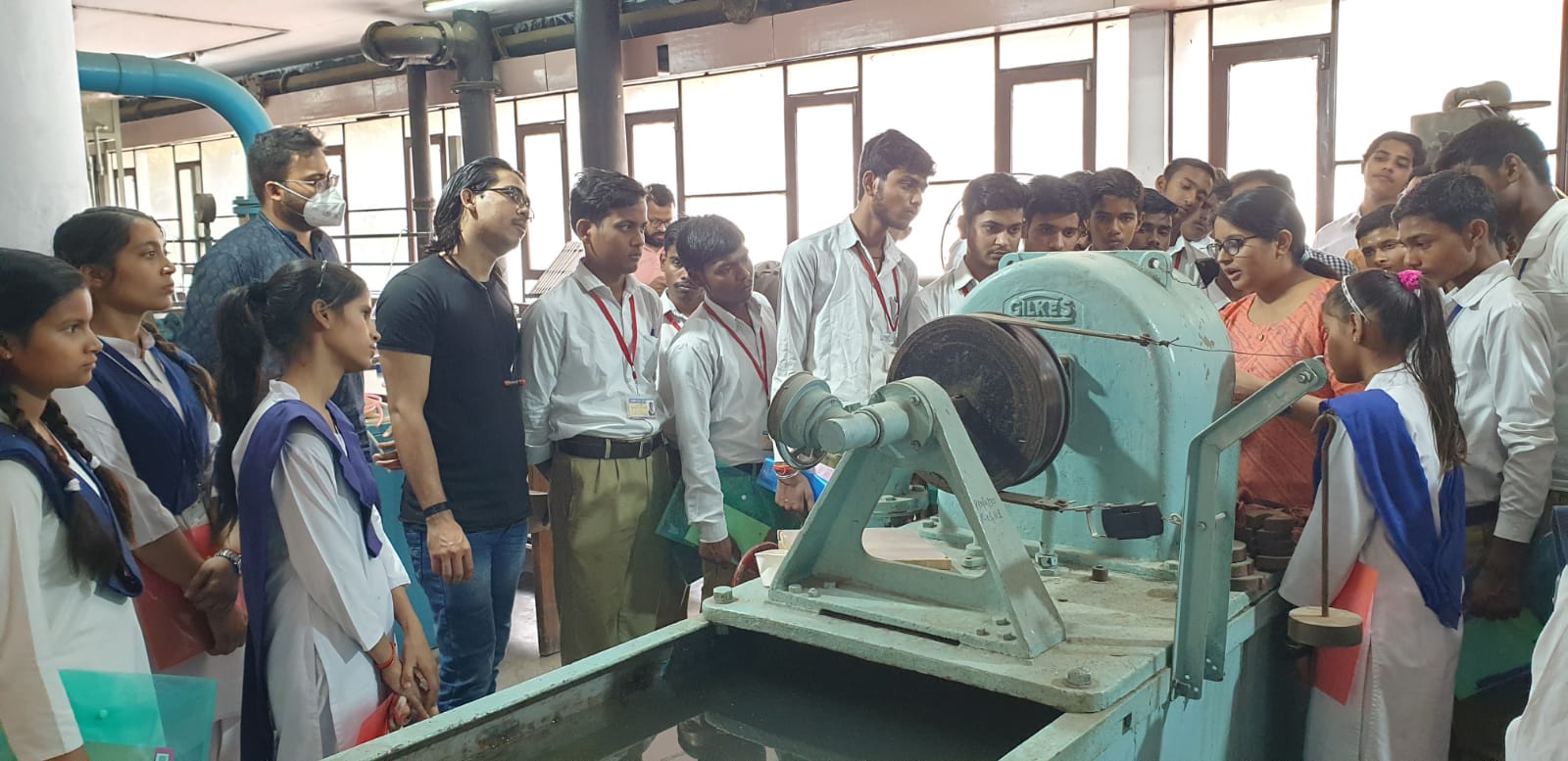
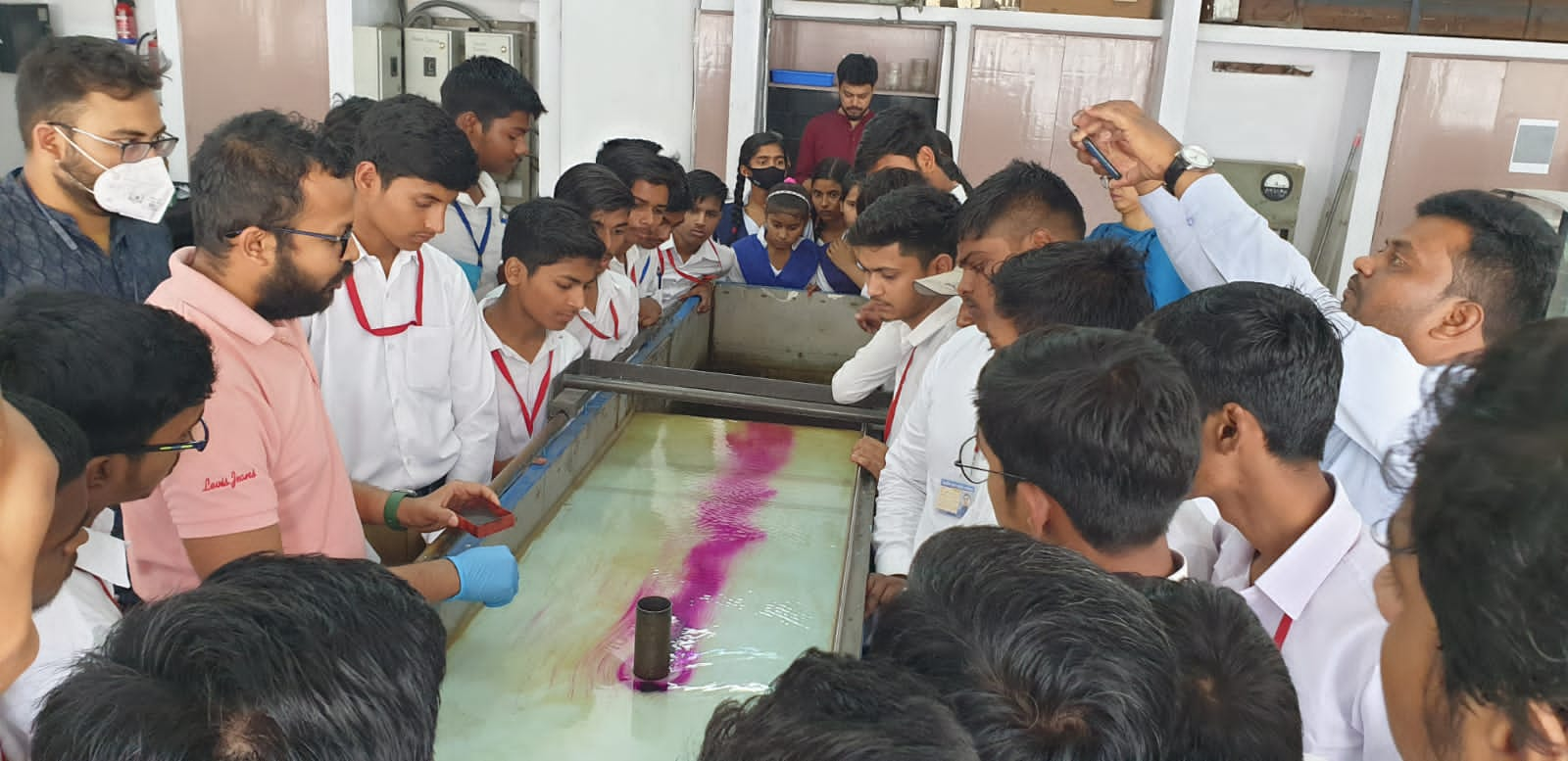
Collaborators
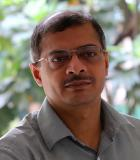
Raghuraman N. Govardhan
Professor, Department of Mechanical Engineering, Indian Institute of Science Bangalore
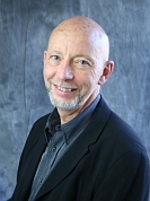
Paul F. Linden
G.I. Taylor Professor Emeritus of Fluid Mechanics, DAMTP, University of Cambridge, UK

Victor Steinberg
Emeritus Professor, Department of Physics of Complex Systems, Weizmann Institute of Science, Israel
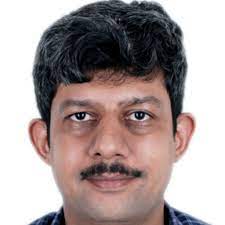
Nishkarsh Gupta
MBBS, MD, DNB, PGCCHM, MNAMS, Professor, All India Institute of Medical Sciences, New Delhi
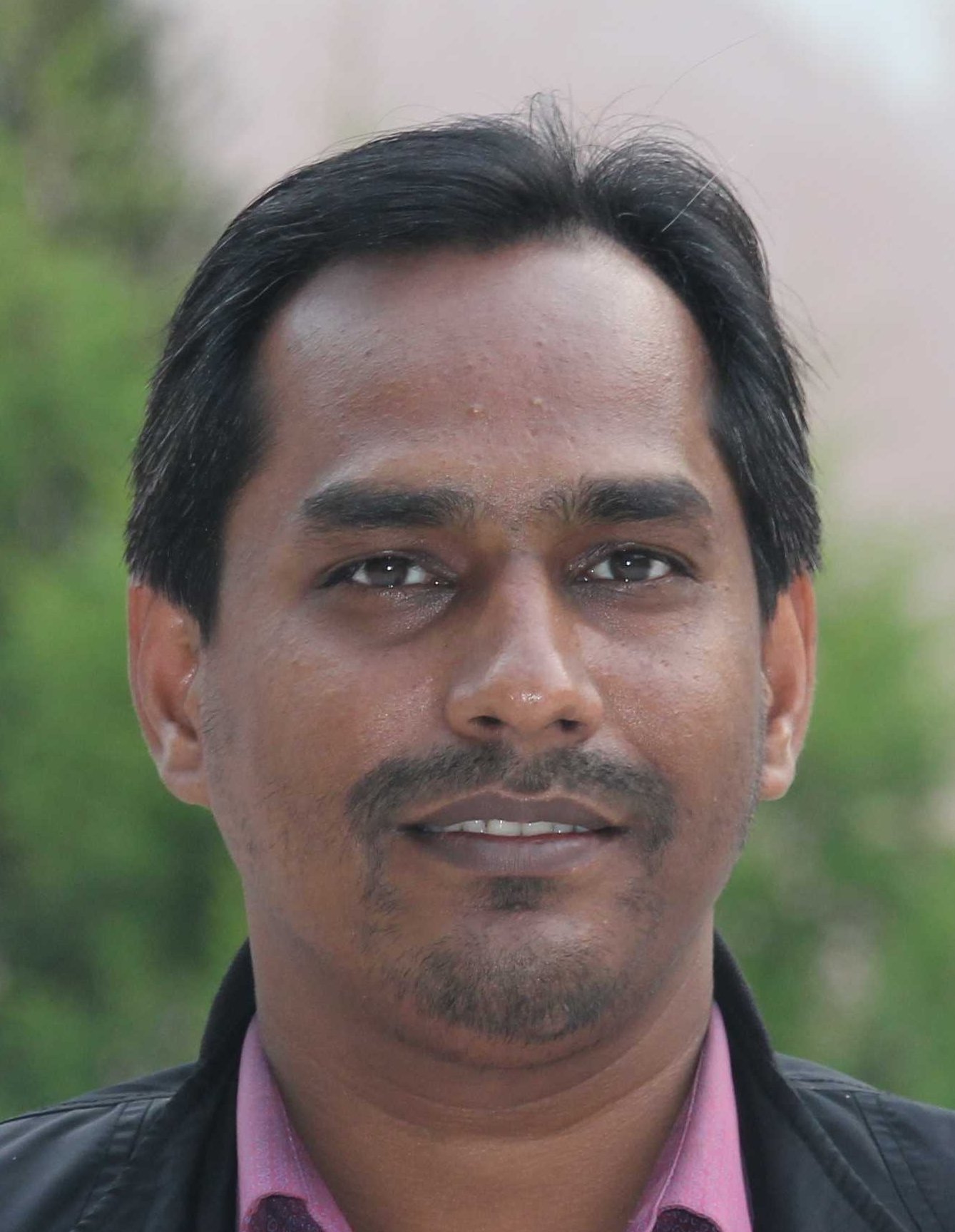
Navneet Kumar
Assistant Professor, Department of Mechanical Engineering, Indian Institute of Technology Jammu
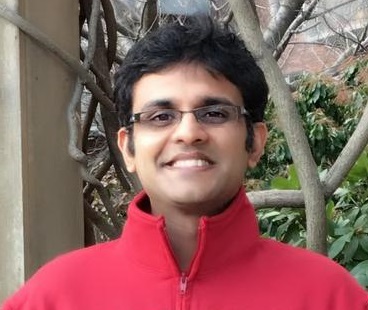
Jay Dhariwal
Assistant Professor, Department of Design, Indian Institute of Technology Delhi
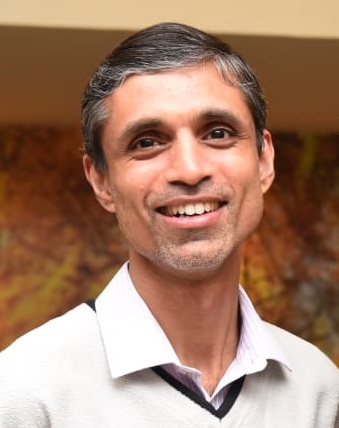
Seshan Srirangarajan
Assistant Professor, Department of Electrical Engineering, Indian Institute of Technology Delhi
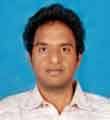
Rama Krishna K
Assistant Professor, Department of Mechanical Engineering, Indian Institute of Technology Delhi

Sachin Kumar B
Assistant Professor, Centre for Biomedical Engineering, Indian Institute of Technology Delhi
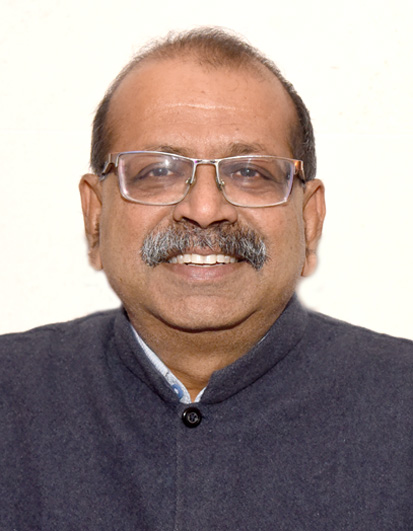
Sanjeev Sanghi
Professor, Department of Applied Mechanics, Indian Institute of Technology Delhi
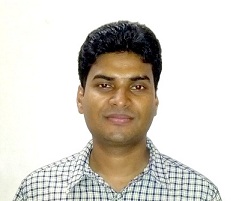
Ajeet Kumar
Professor, Department of Applied Mechanics, Indian Institute of Technology Delhi
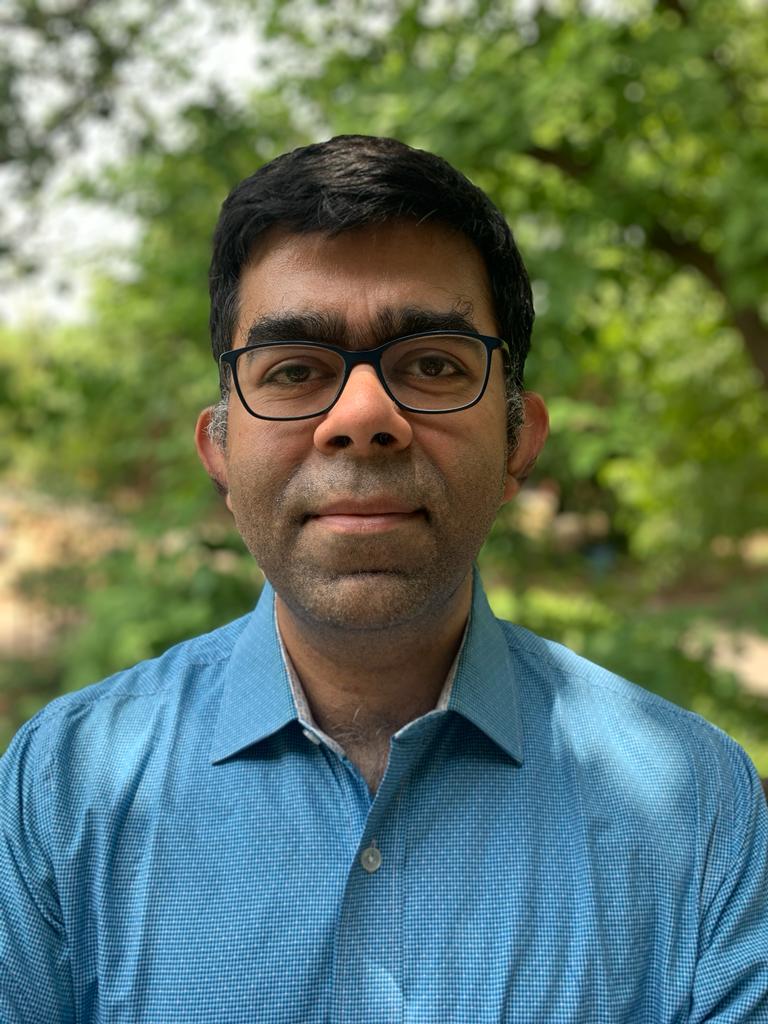
Amitabh Bhattacharya
Professor, Department of Applied Mechanics, Indian Institute of Technology Delhi
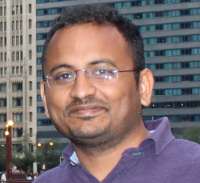
Vamsi K. Chalamalla
Assistant Professor, Department of Applied Mechanics, Indian Institute of Technology Delhi
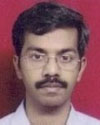
Murali R. Cholemari
Associate Professor, Department of Applied Mechanics, Indian Institute of Technology Delhi
Photos
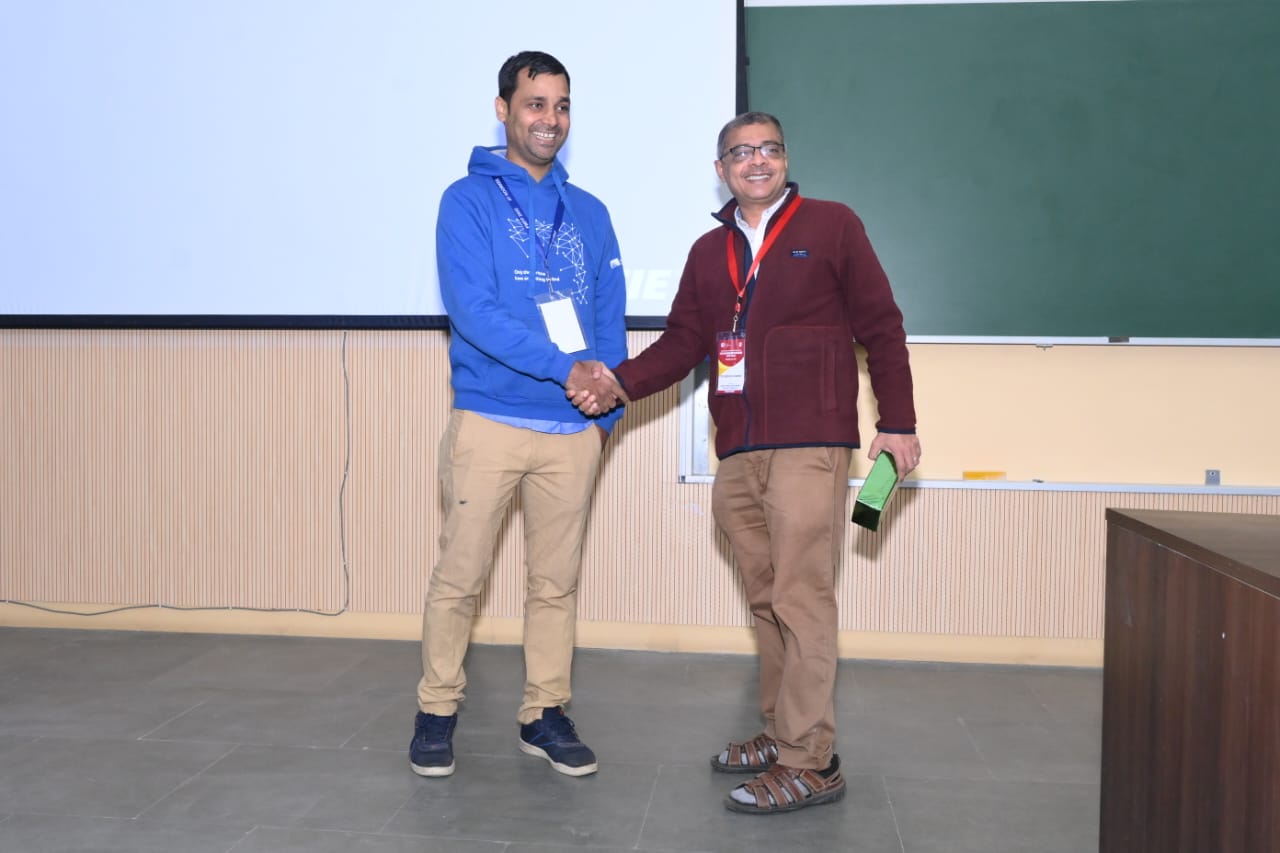
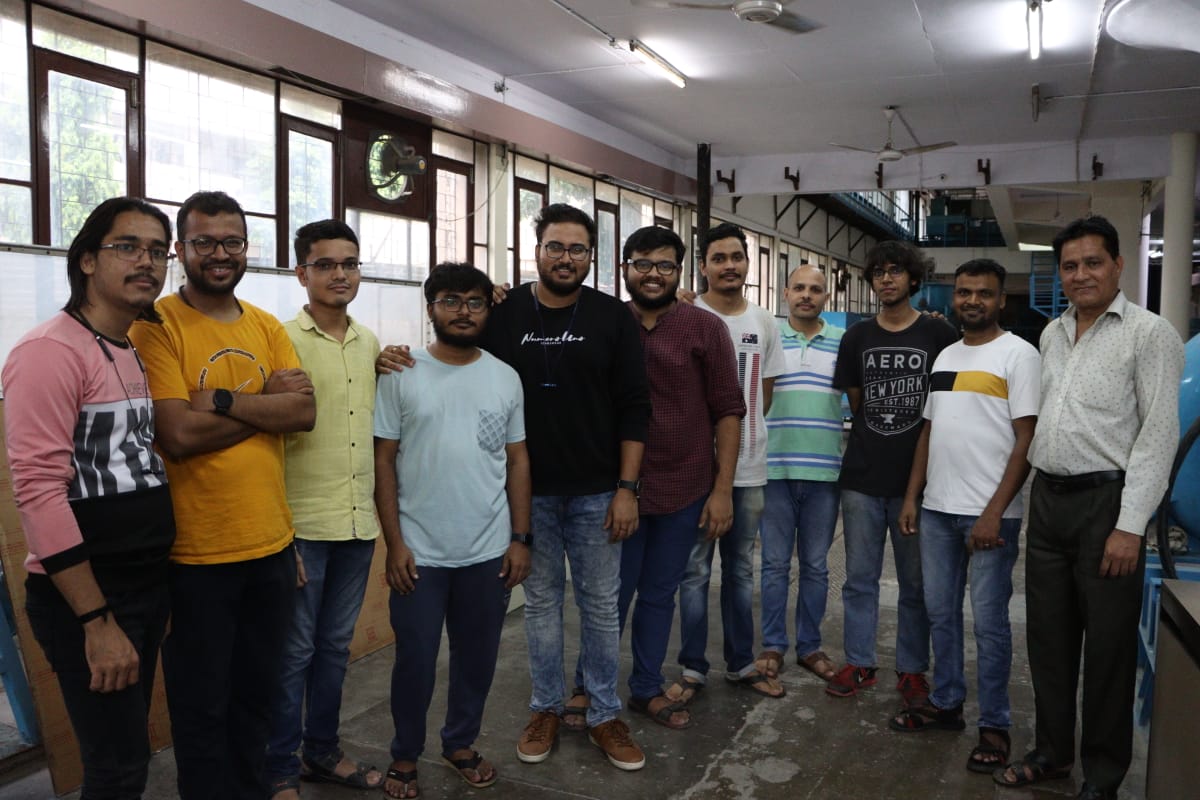
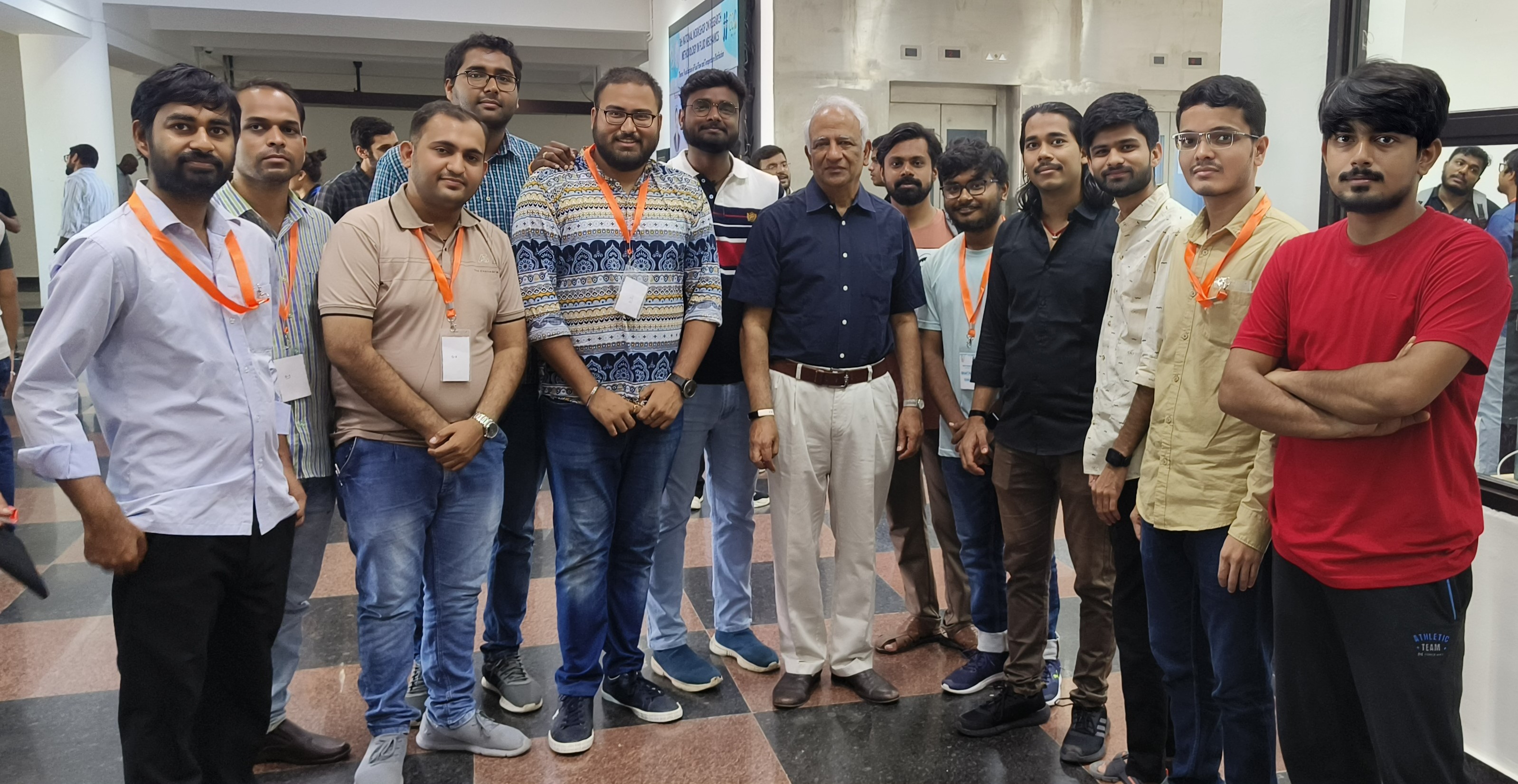

Opportunities
I have openings for post-doc and JRF/project scientist. I strongly encourage dedicated students to contact me for their Masters or PhD study. My lab (Fluids lab for
Environment, Engineering, and Biology: FE2B) focuses on Understanding Turbulence For Societal And
Industrial Need: Two phase, Stratified And Elastic flows. We are basically a group of experimental enthusiasts interested in
solving fluid dynamics problems. Interested students are encouraged to contact me personally at
narsingjha@am.iitd.ac.in attaching resume and SOP.
Contact
Email To: narsingjha@am.iitd.ac.in
Block - III, Room No. 233
Main building
Deptt. of Applied Mechanics
Indian Institute of Technology, Delhi 110016
Contact: +91-11-2654-8424